Front stack loaded… two shelves deep with a lot more pots. Quite a few mugs. You know they’re my favorite thing to make! I love loading the soda kiln… pot by pot, shelf by shelf until it’s full.
Now time to brick up the door… ugh.
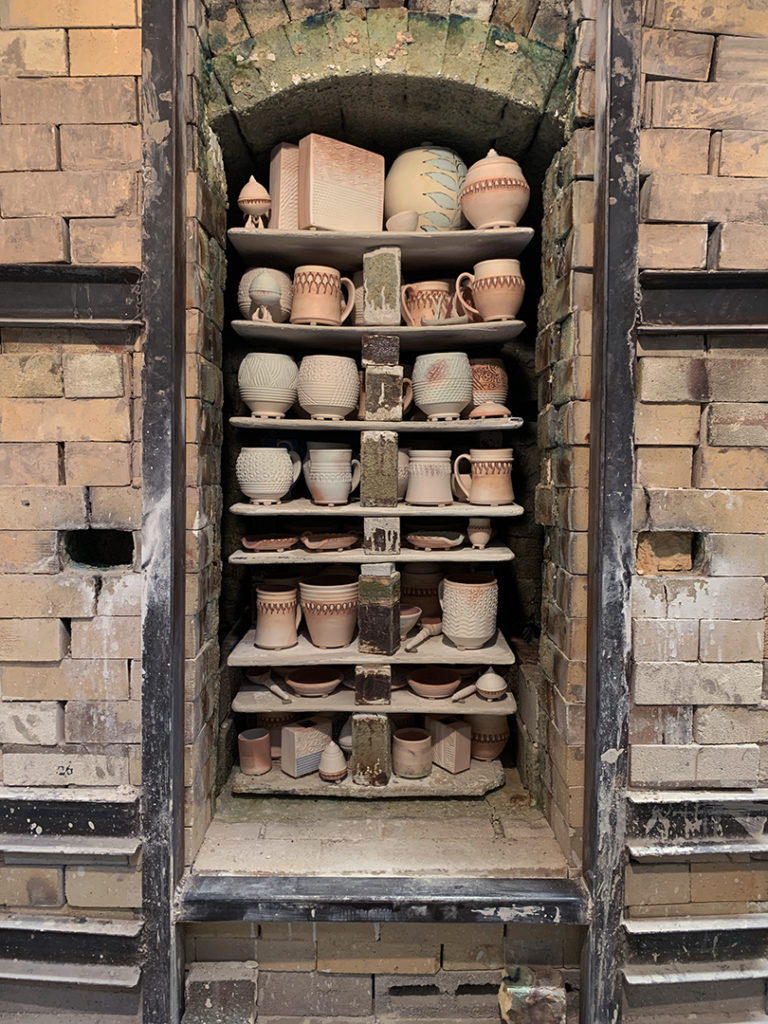
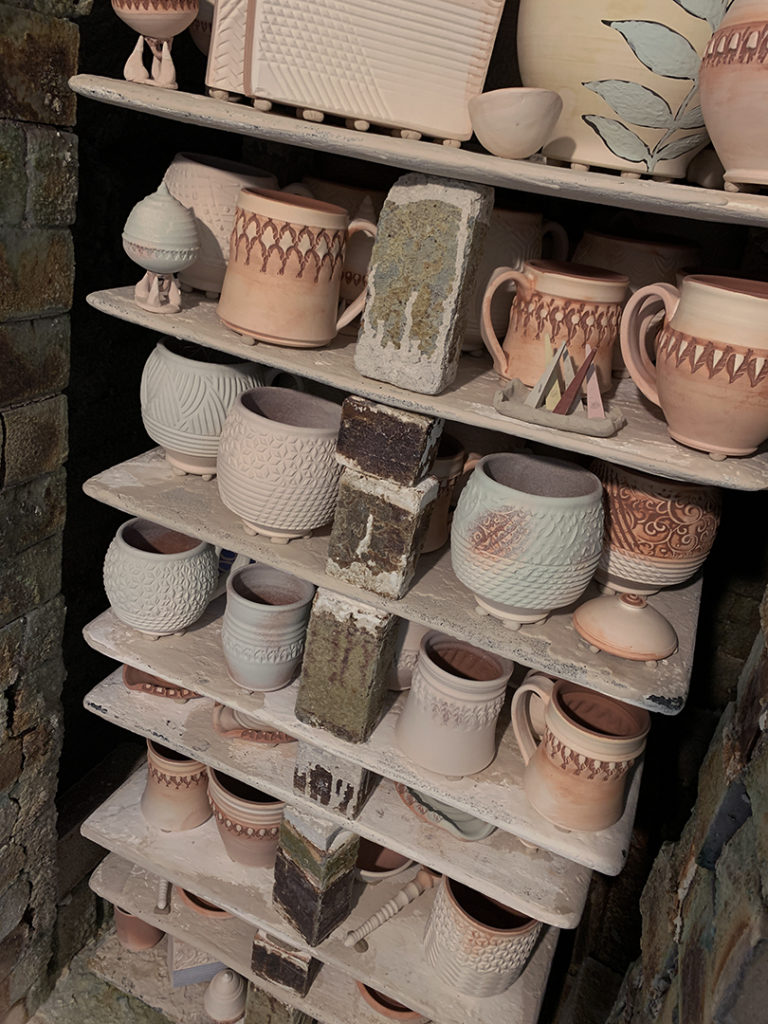
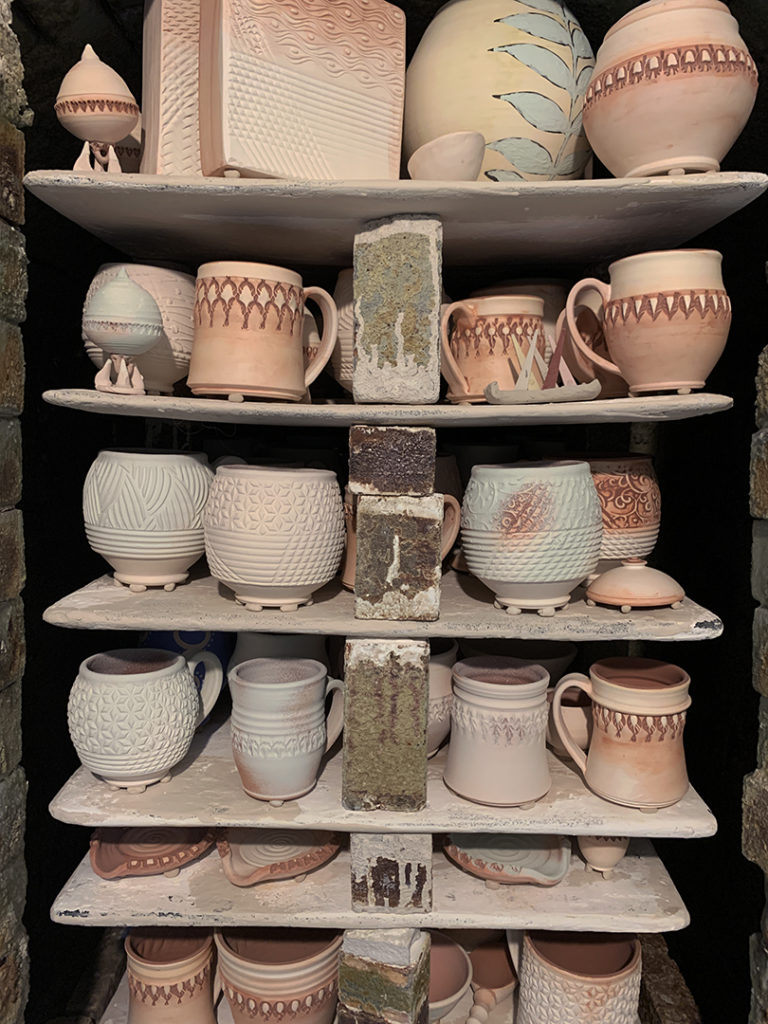
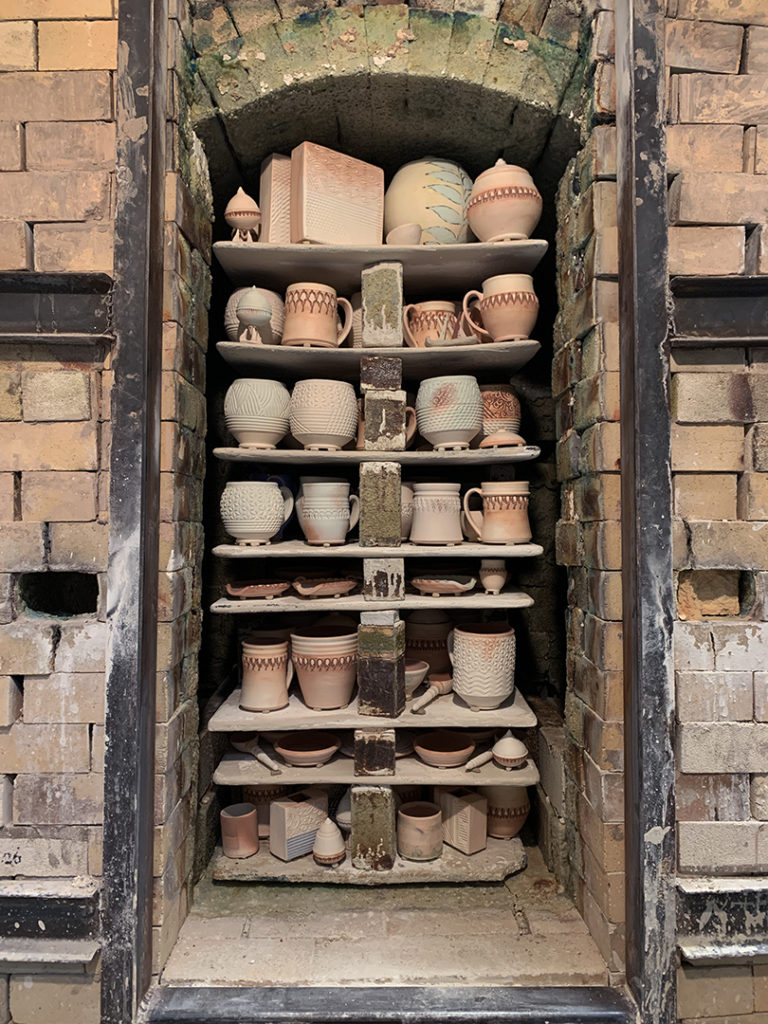
Gary Jackson: Fire When Ready Pottery
A Chicago potter’s somewhat slanted view of clay & play |
Front stack loaded… two shelves deep with a lot more pots. Quite a few mugs. You know they’re my favorite thing to make! I love loading the soda kiln… pot by pot, shelf by shelf until it’s full.
Now time to brick up the door… ugh.





Once my slip & plate were on the drier-side of leatherhard, it was ready for my class demo last Thursday night. I had already trimmed the bottom of the piece… but now I needed to shave off the top layer of white slip.
The “plan” for sanggam is to shave off the top layer of slip and leave it filled in the stamped impressions! Like I said… this is my first time really trying this technique. And what better place to do it than in class as demo for all of my Thursday night students?!
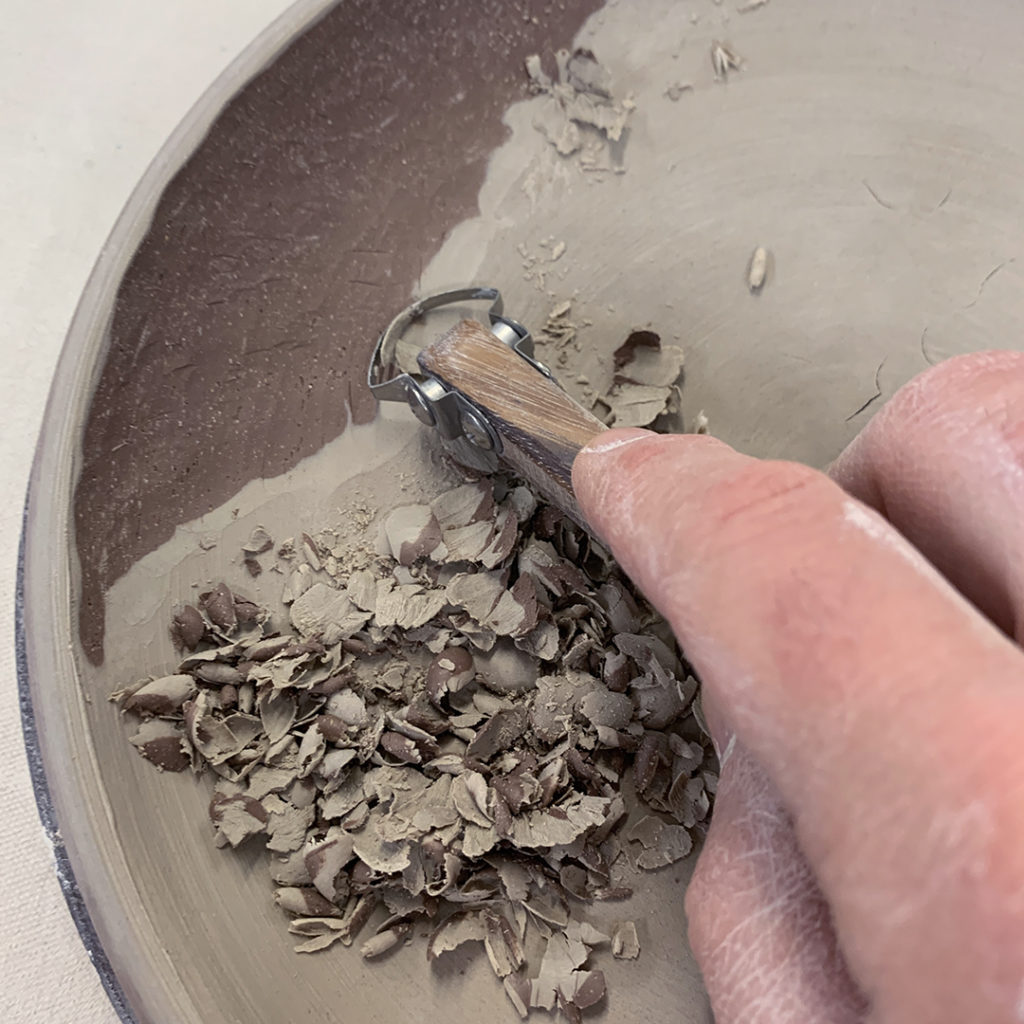
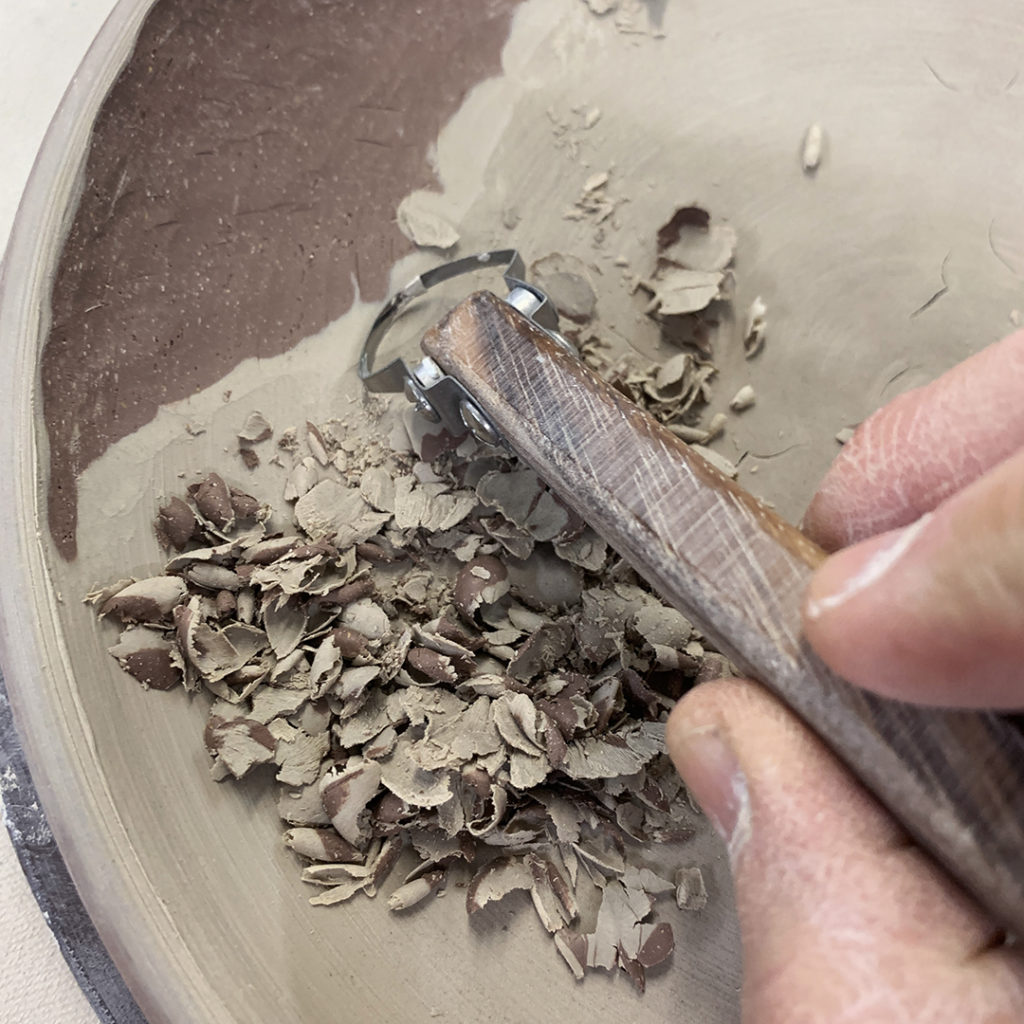

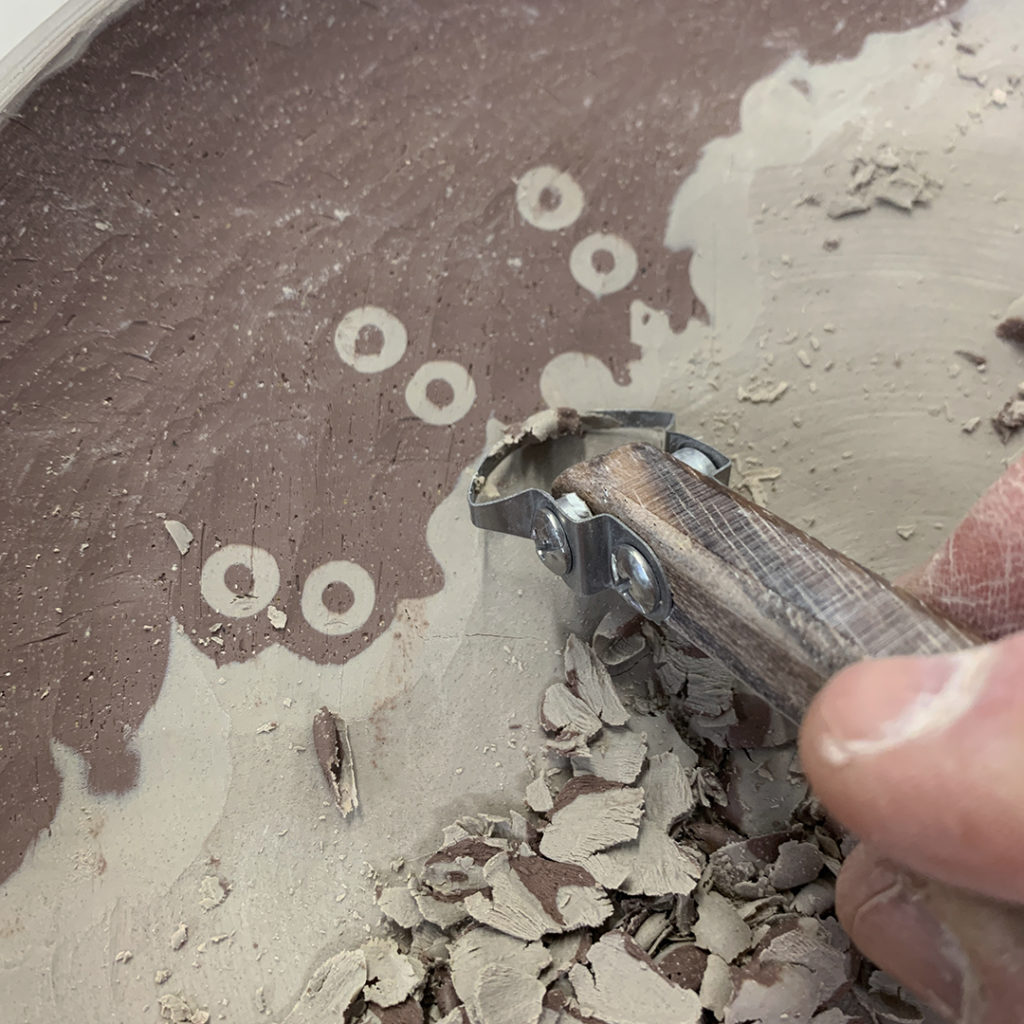
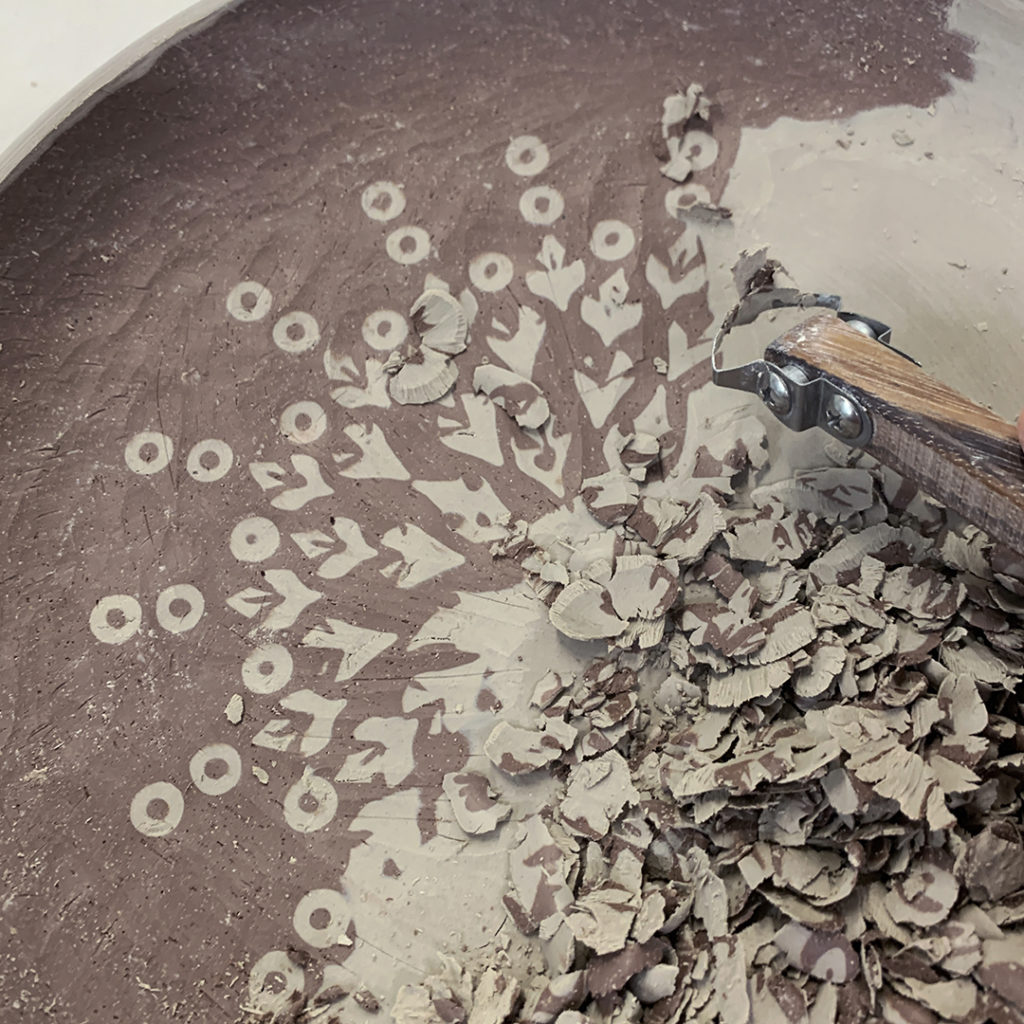
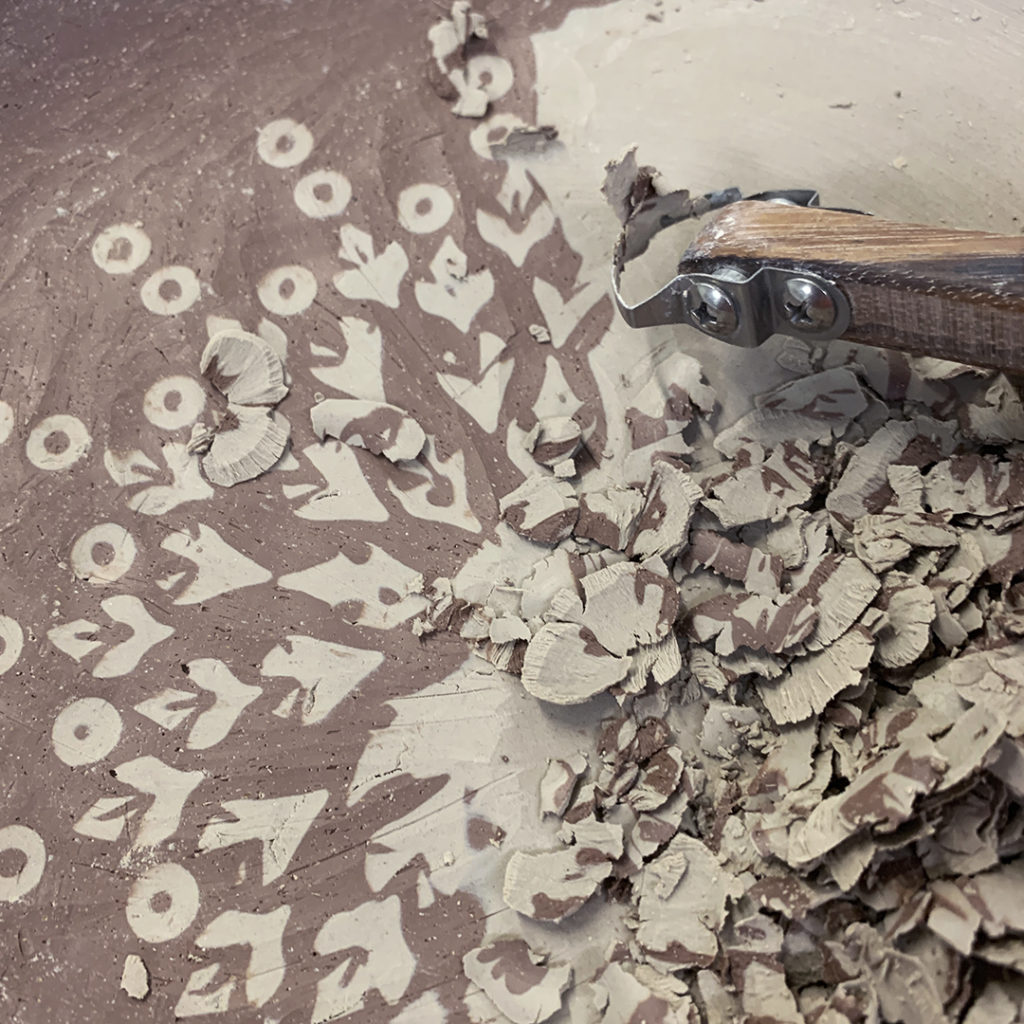
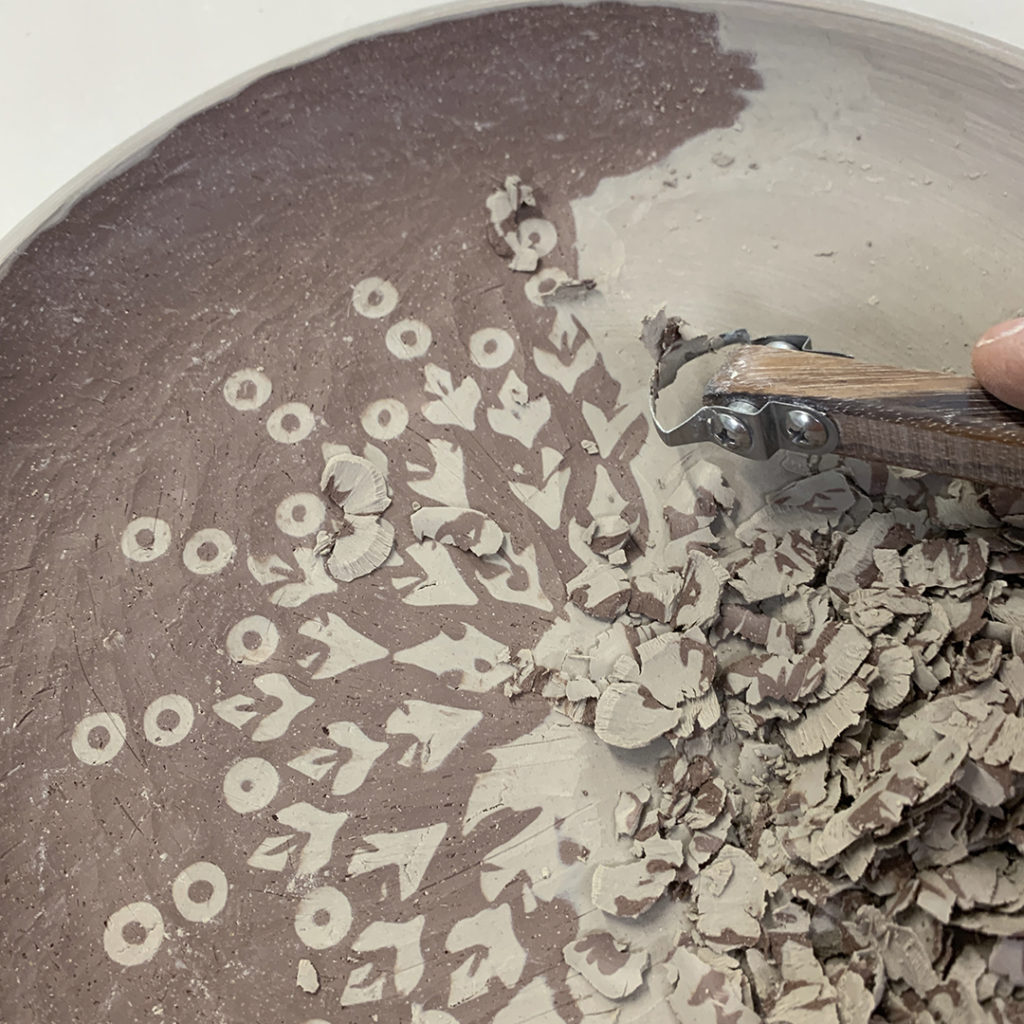
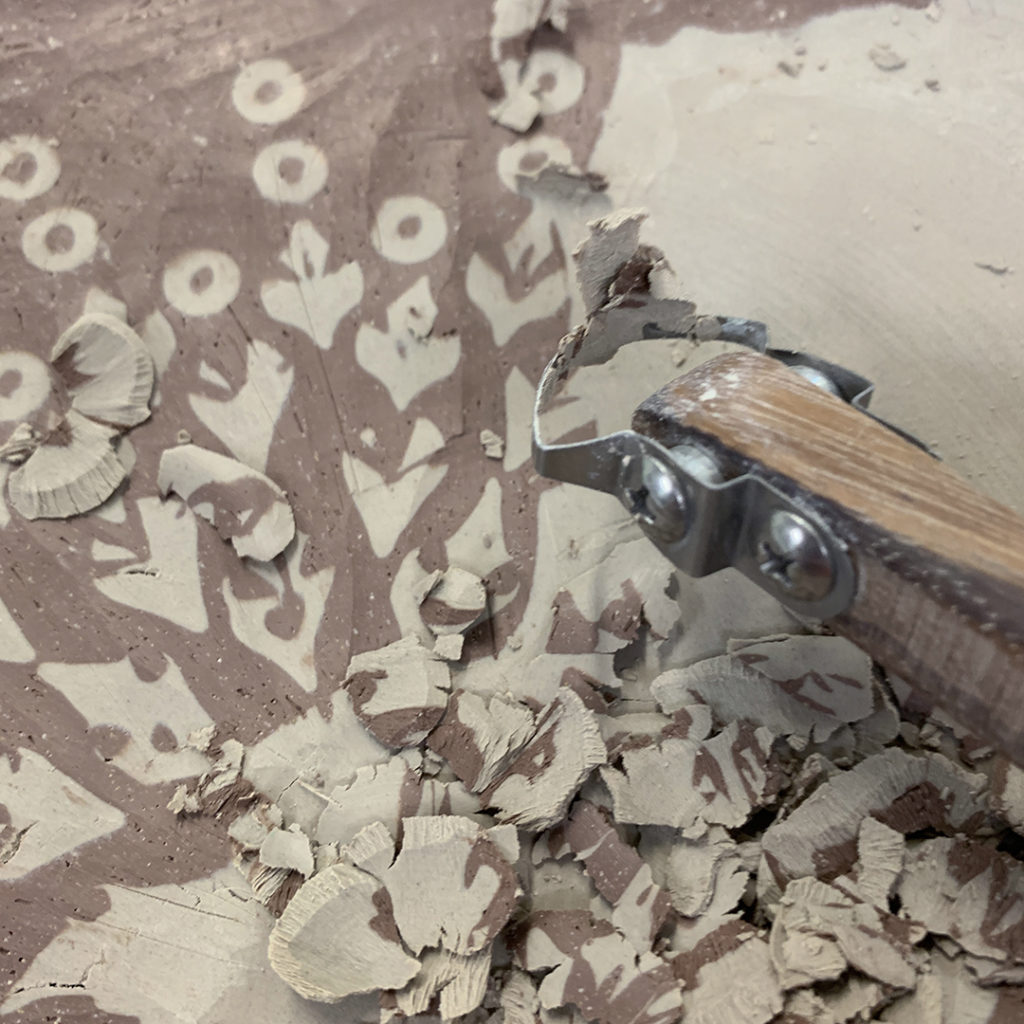
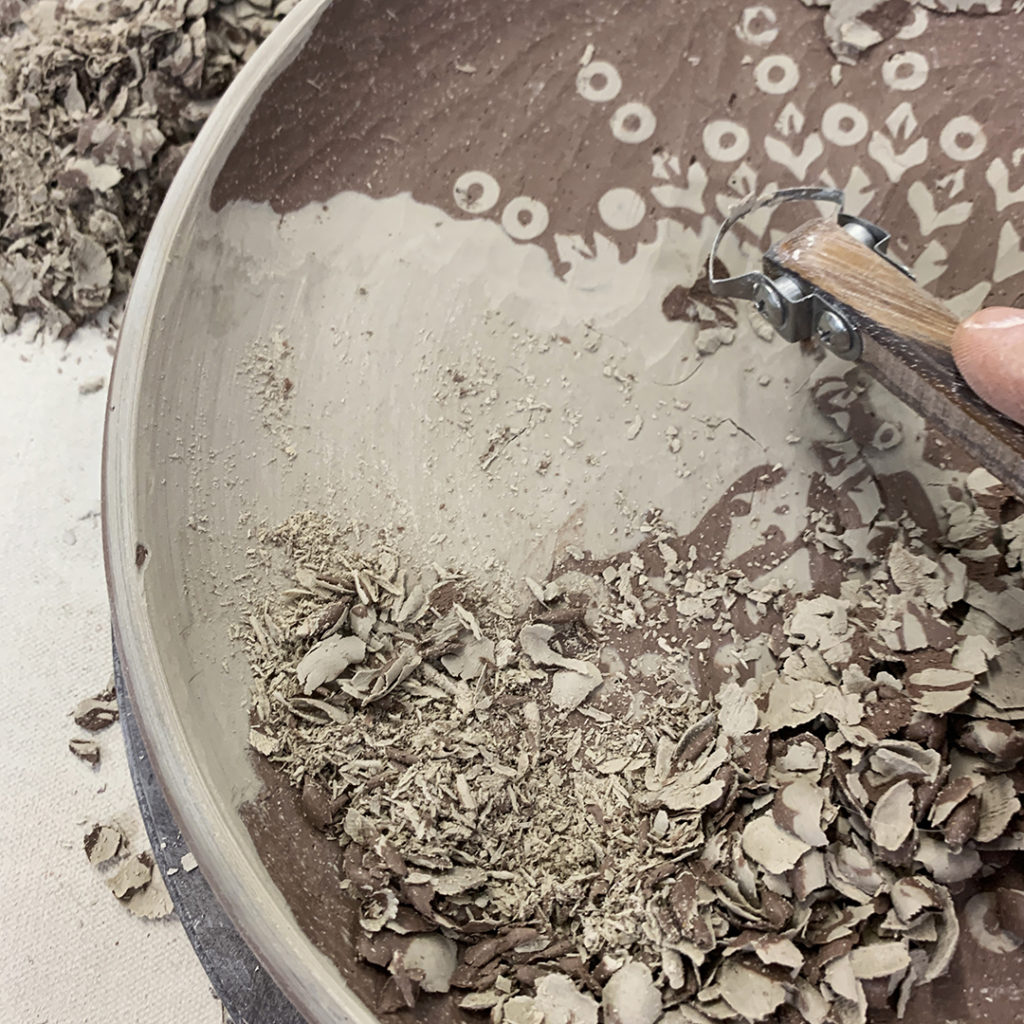

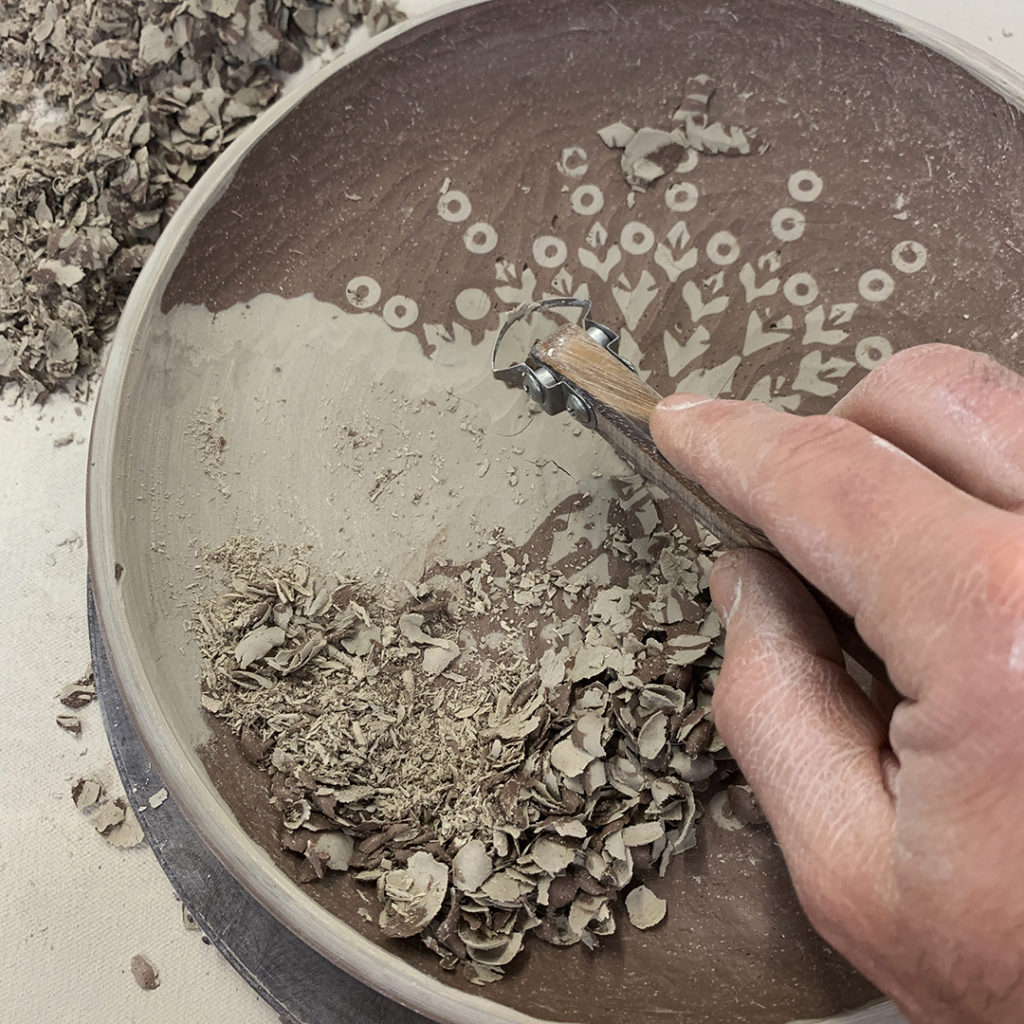
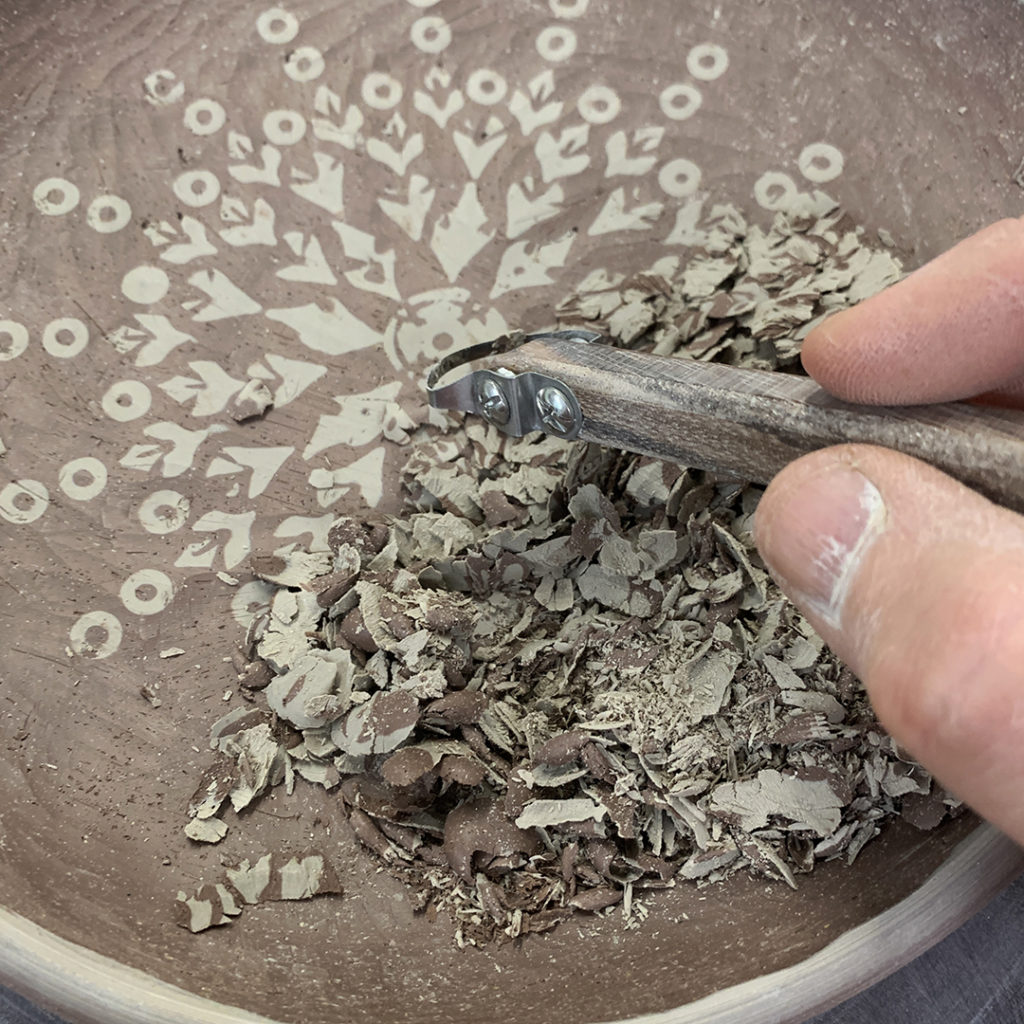
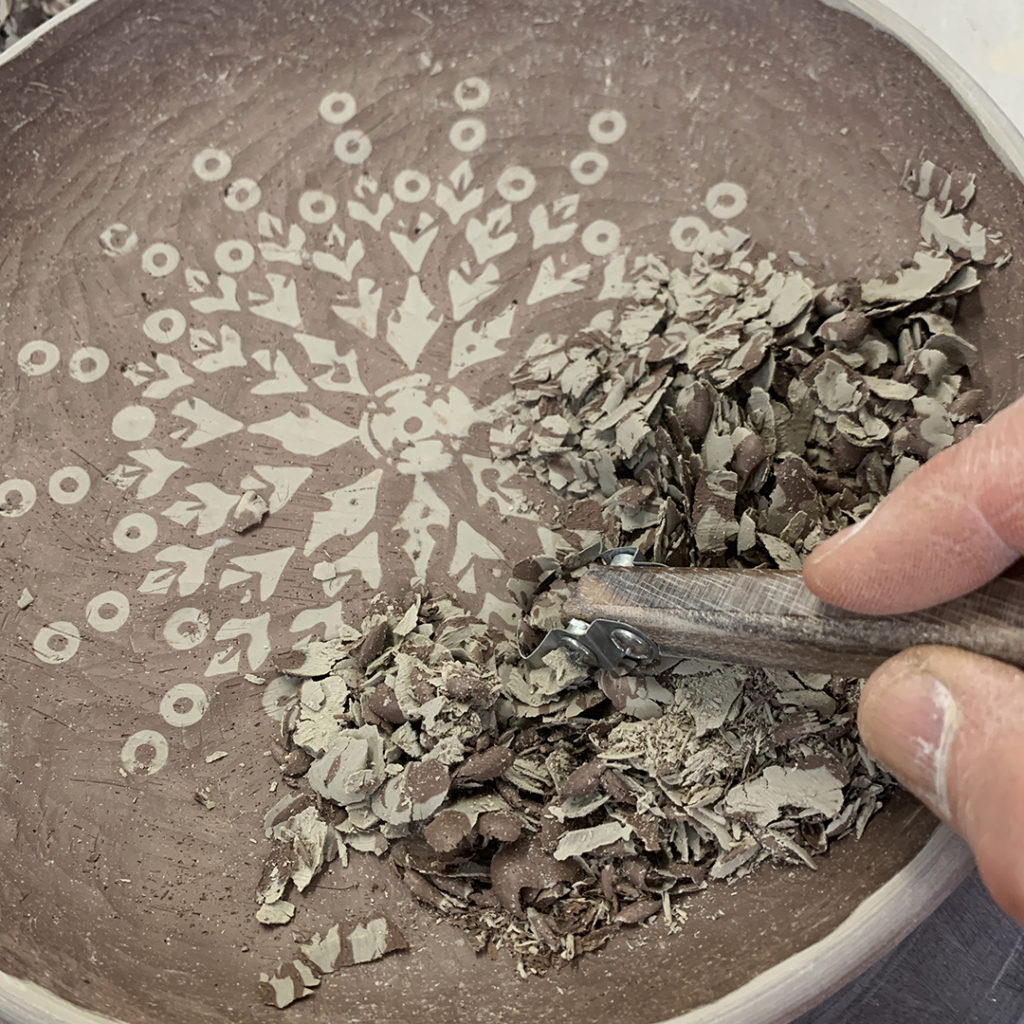
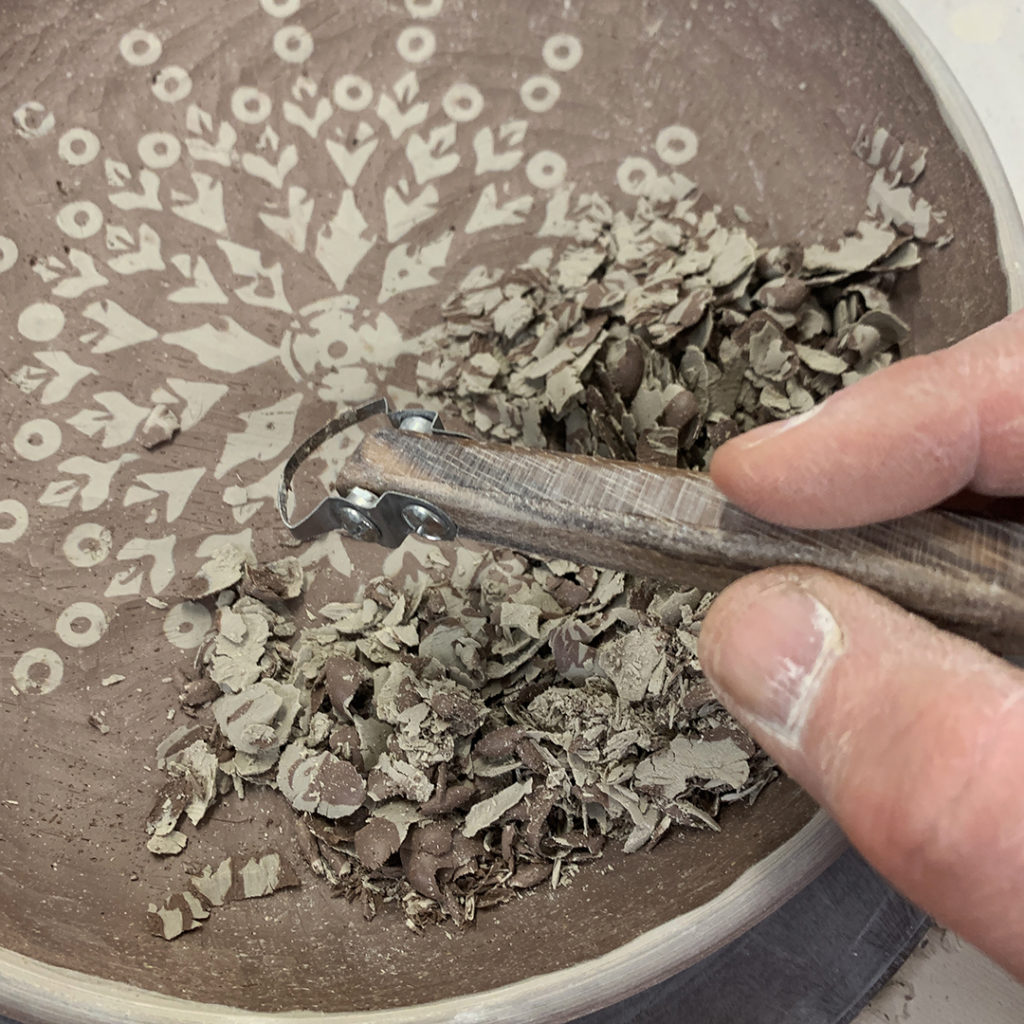
Turns out that my T2 Arc Trimming Tool from DiamondCore Tools was the perfect too for shaving off the white slip! It’s nice & sharp, and the curved edge seemed to fit in all the right placed without shaving off any gouges or lines!
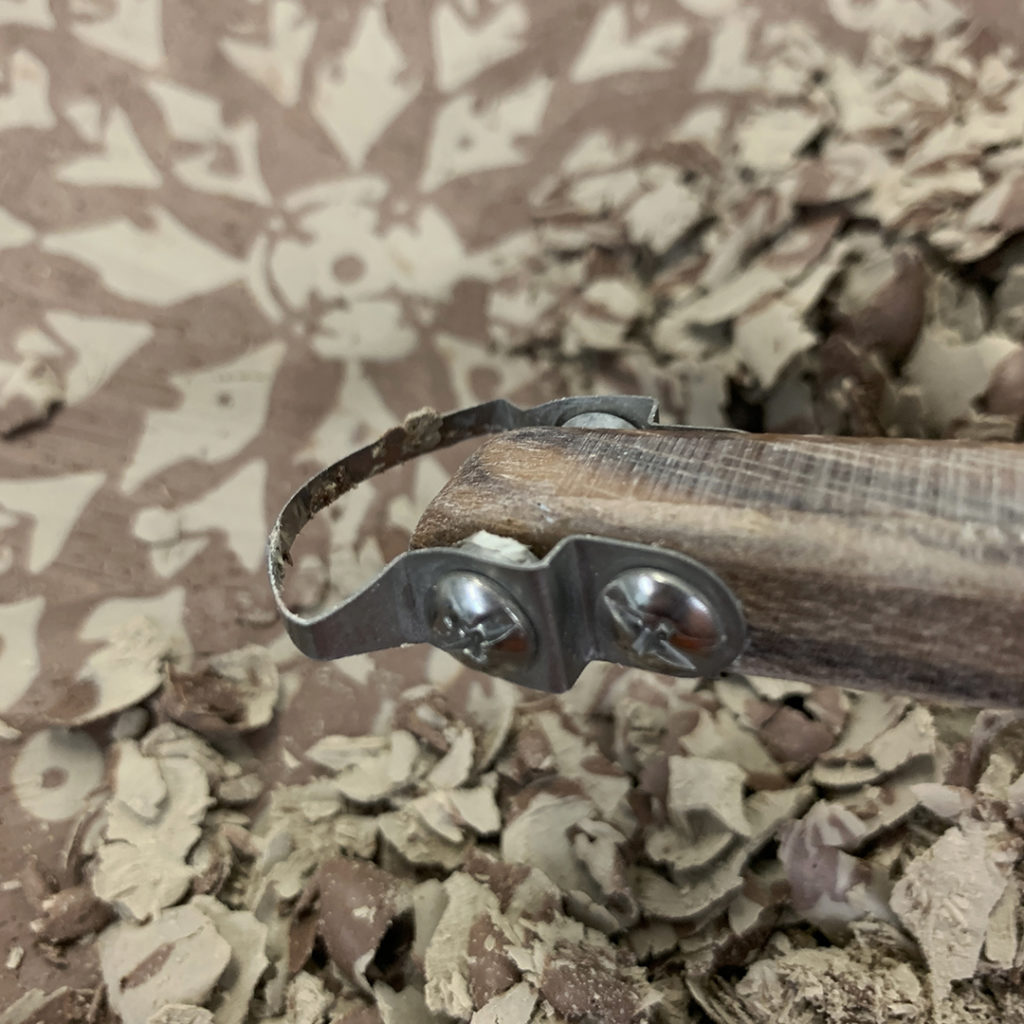
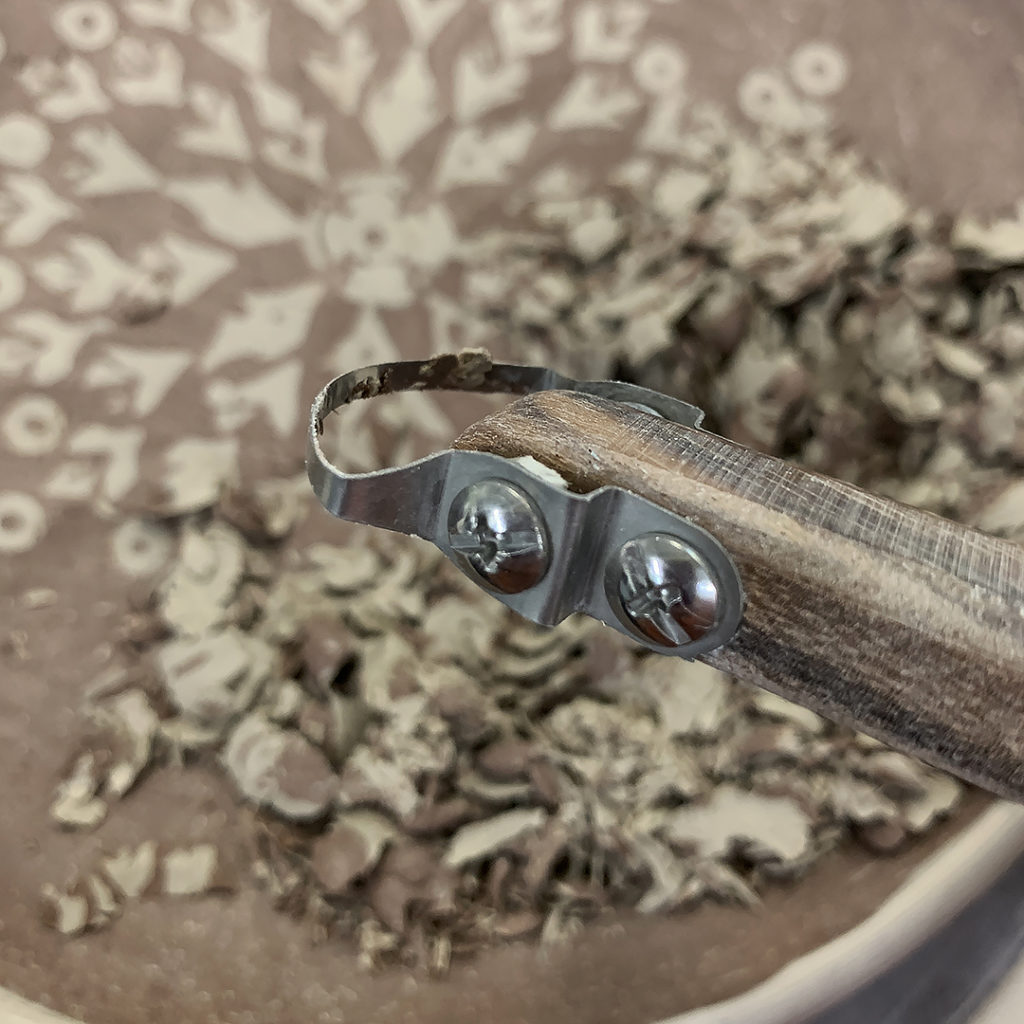
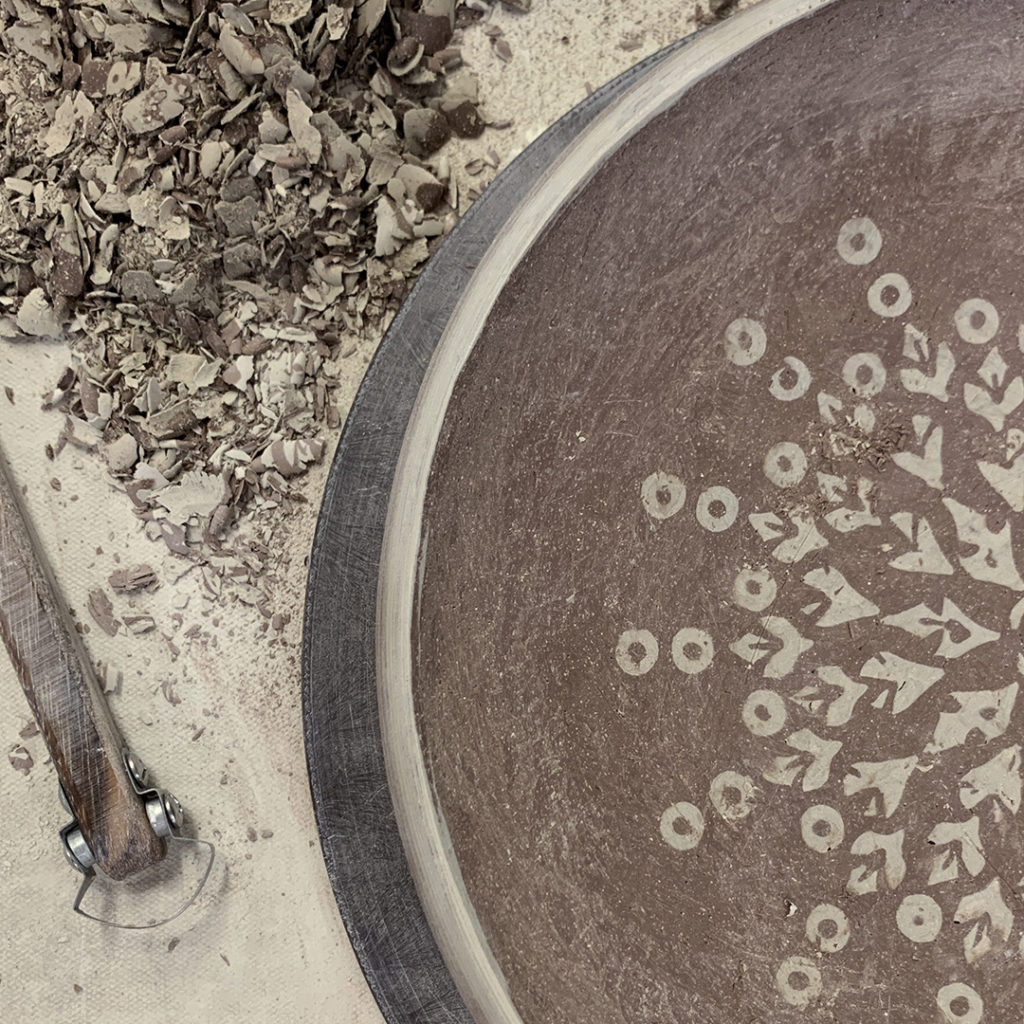
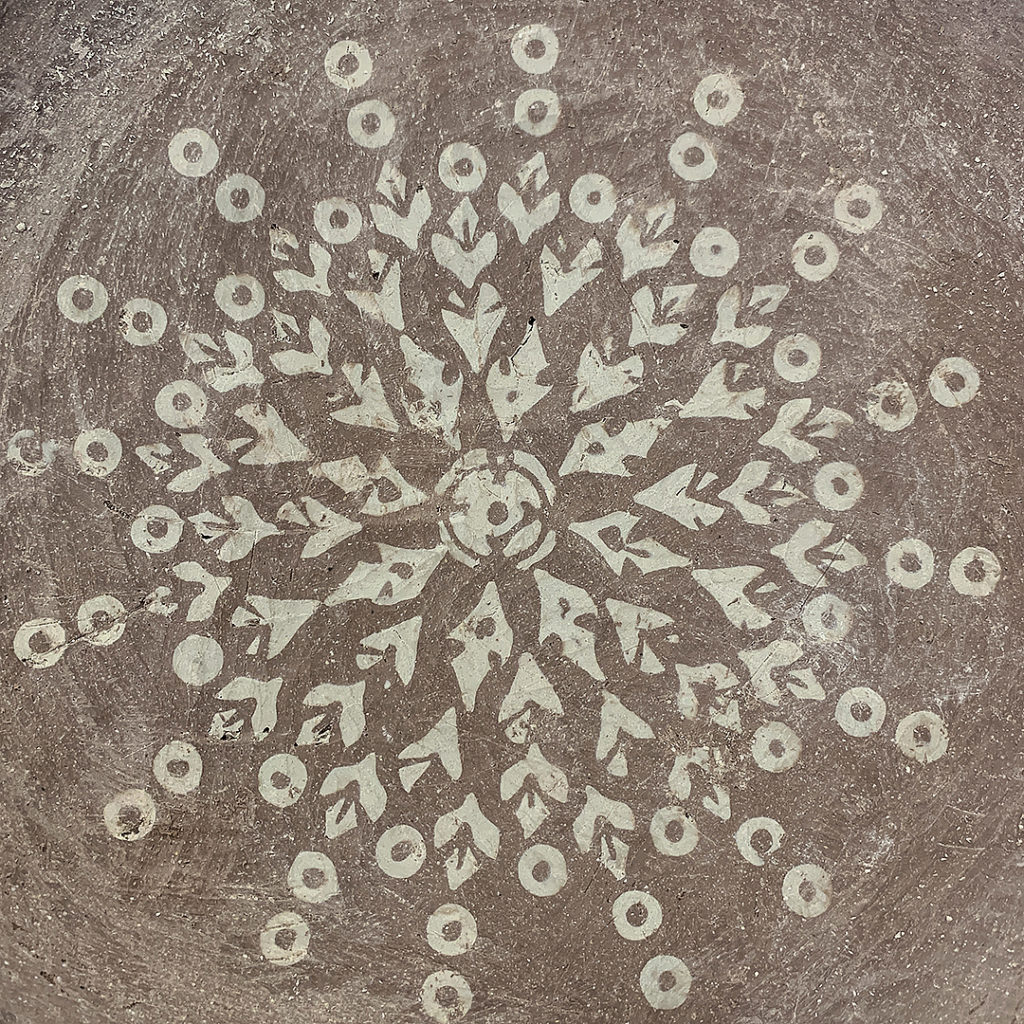
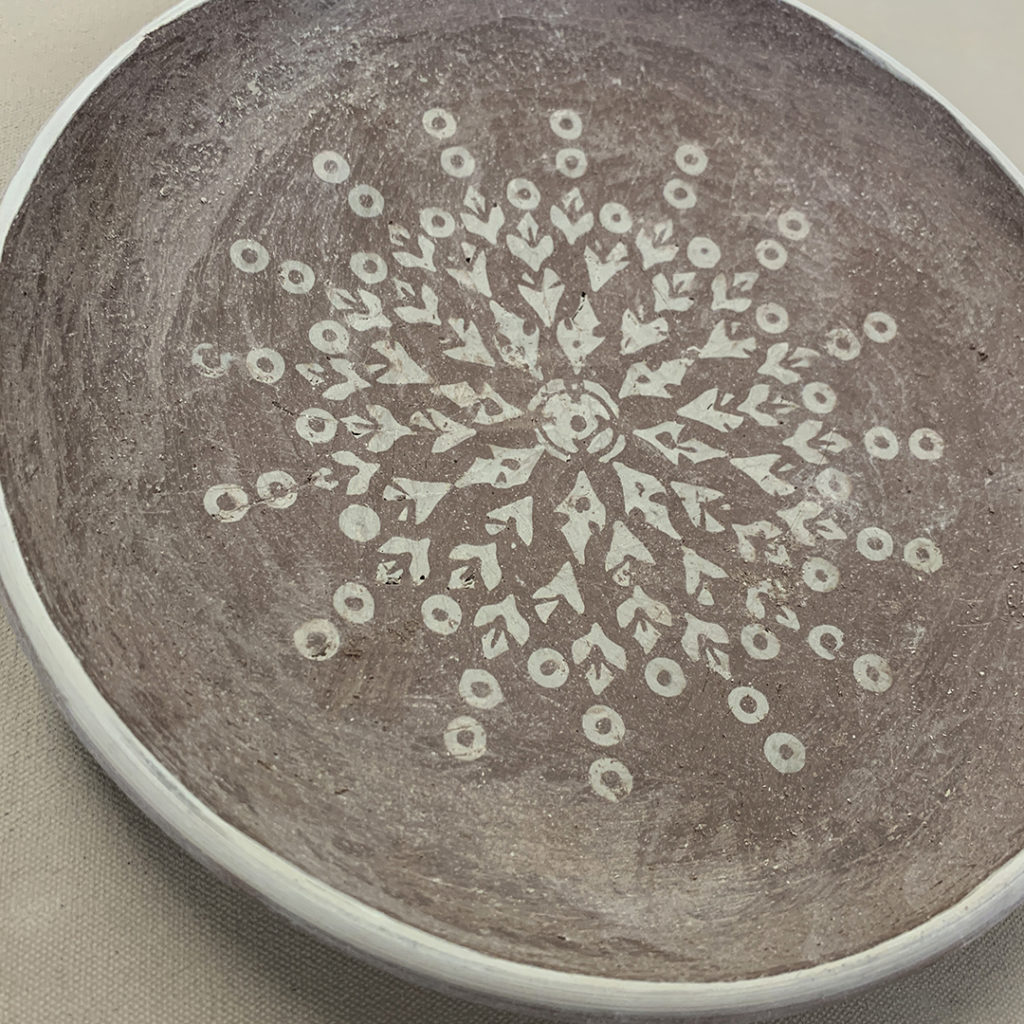
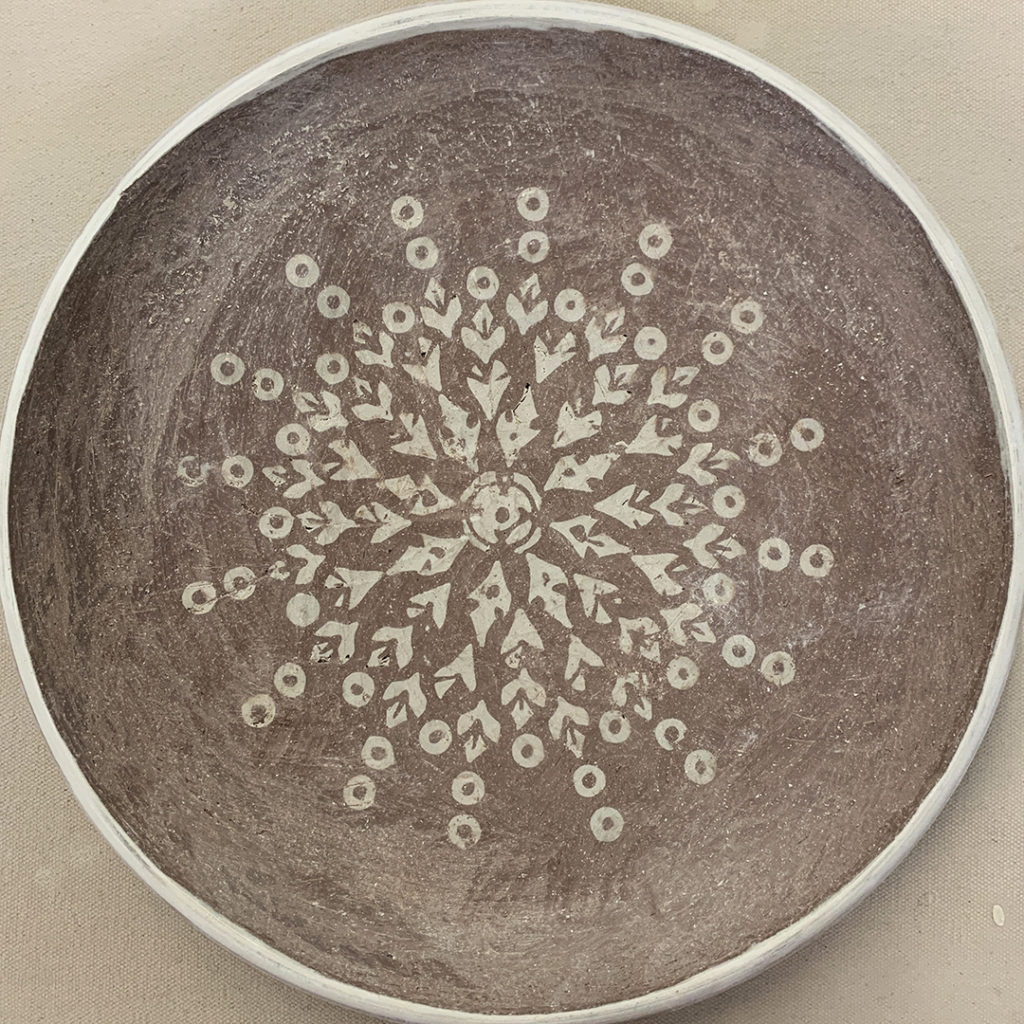
And now that I have all of the pattern revealed, I’m planning on smoothing it out a bit with some sandpaper after to dries completely… with my mask on of course!!!
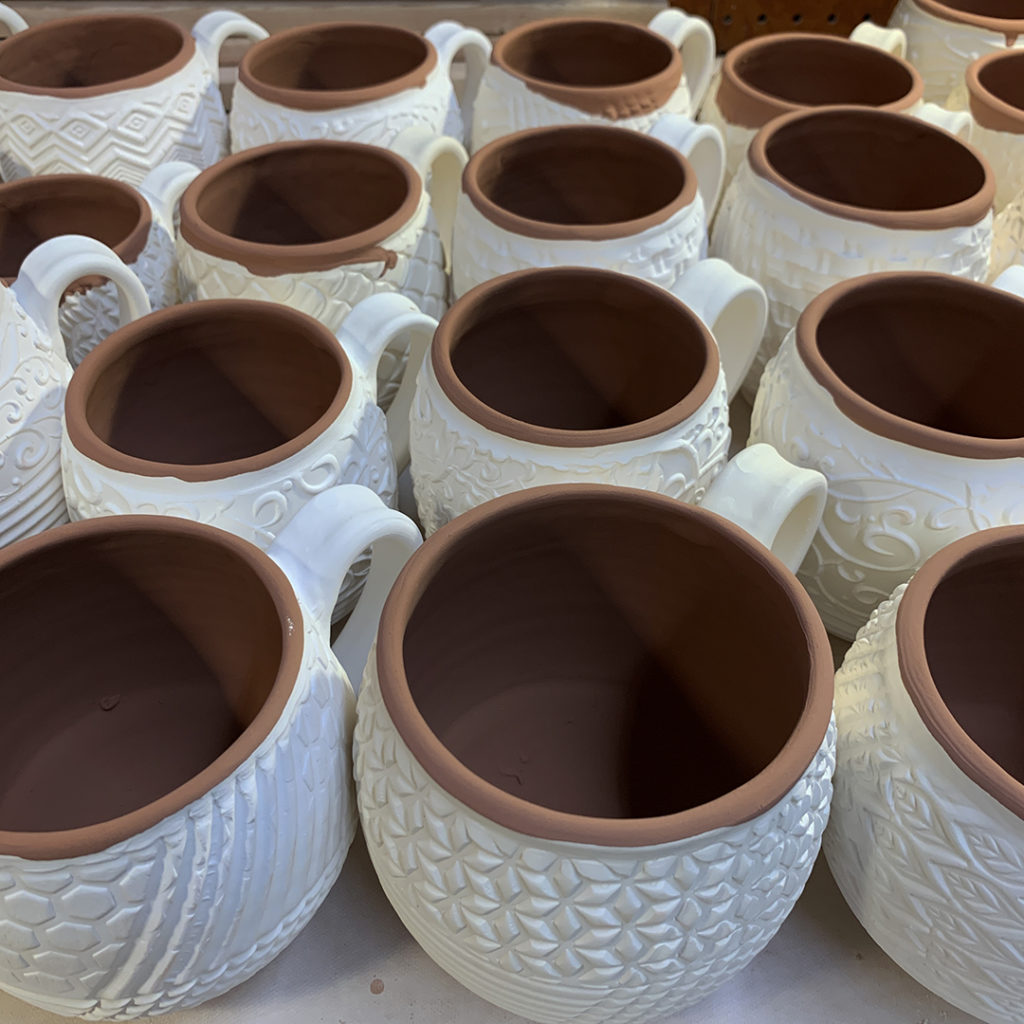
So I’ve finally started glazing these combo mugs! Since they’re going to be soda-fired, I pretty much need to just put a liner glaze inside, and then hope that the soda-kiln atmosphere makes all the “magic” happen! They were all dipped in colored flashing slips before bisque firing… so there should be some fun colors when they come back out of the kiln!
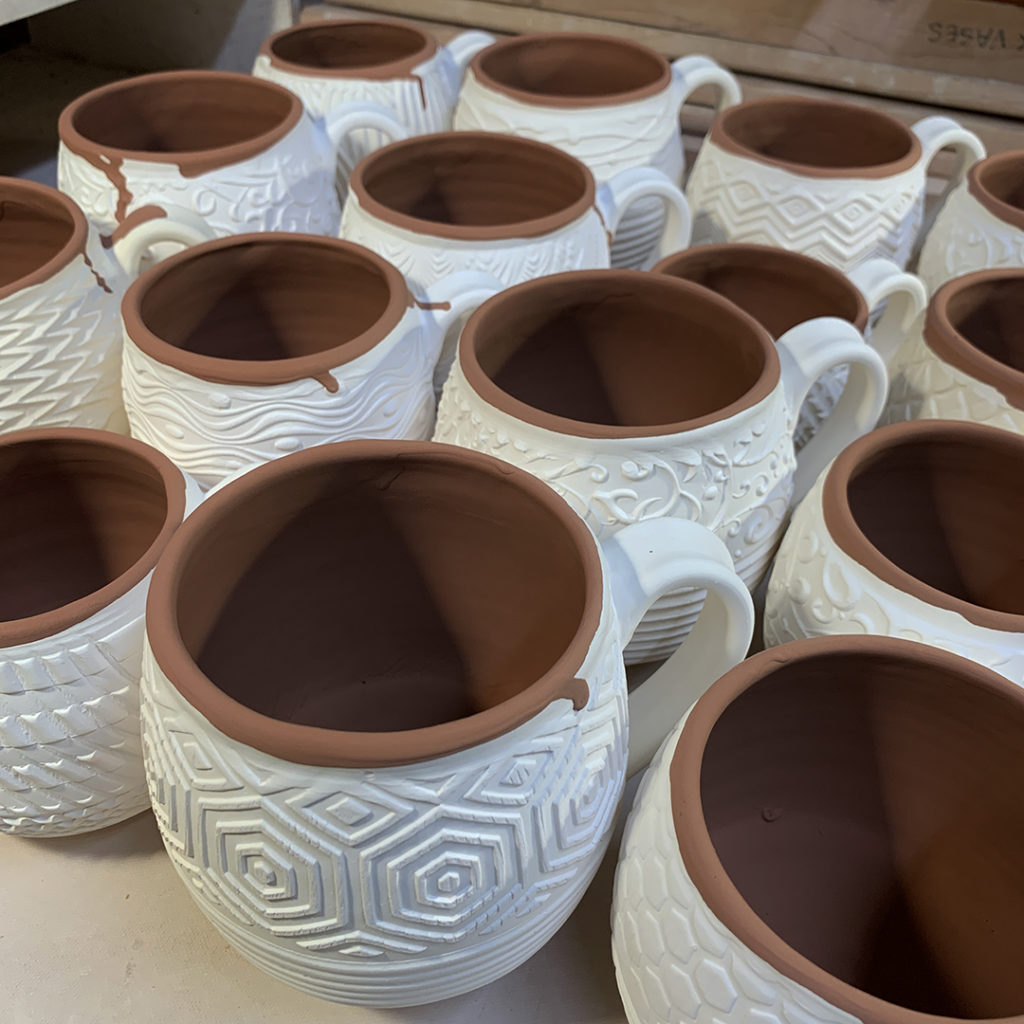
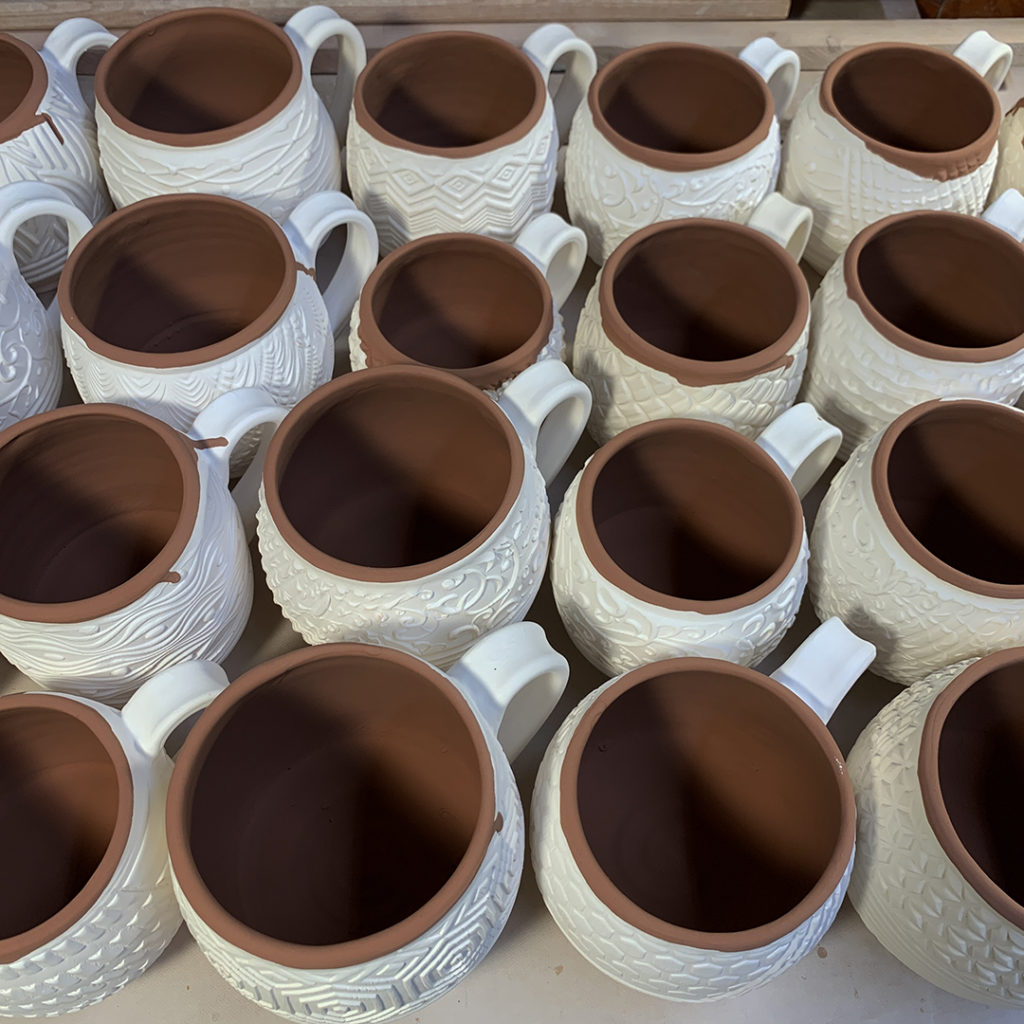
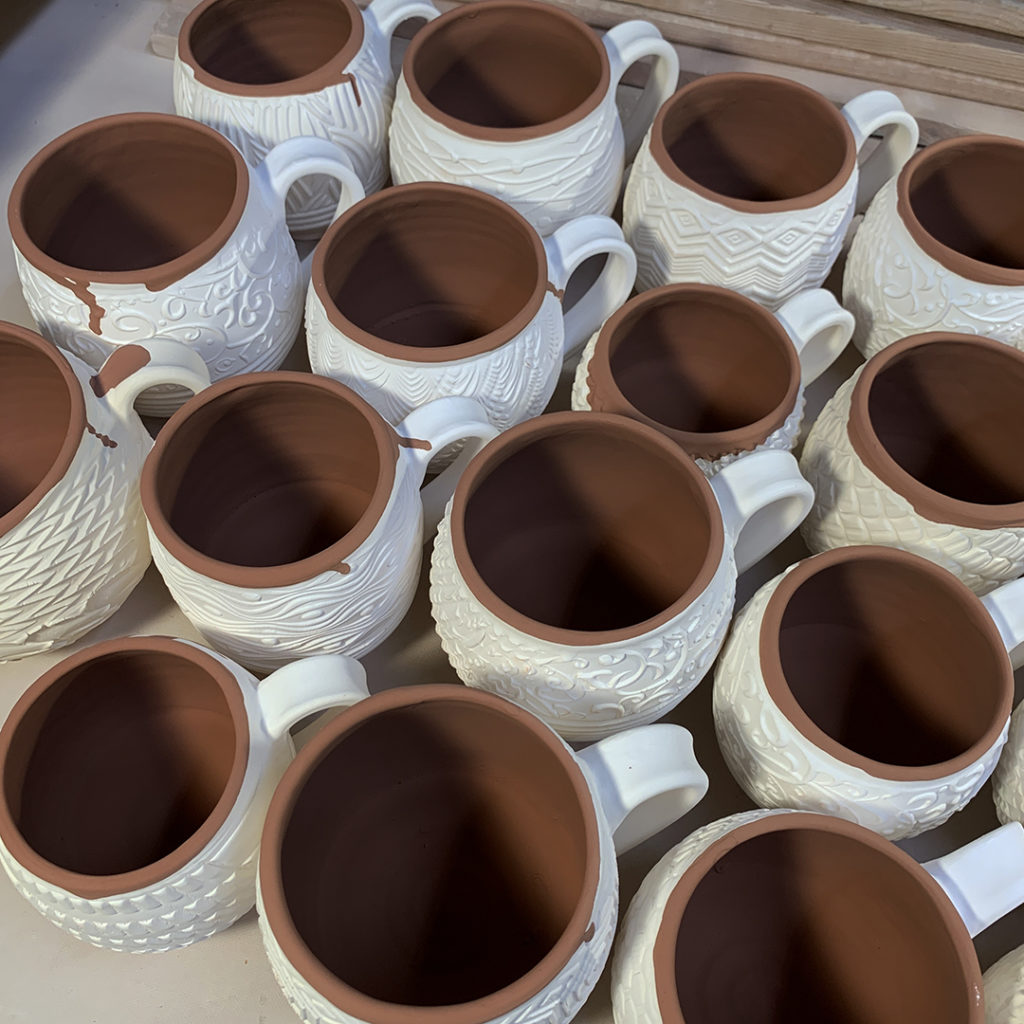

So I’ve unloaded the bisque kiln and now I’ve got just a bit of glazing to do. These are more of my new “wheelthrown-handbuilt-combo” mugs. They’re all ready to go… but I might tackle these tomorrow! Seems a little daunting right now?! I’ve got time… my next soda-firing is still a ways away!



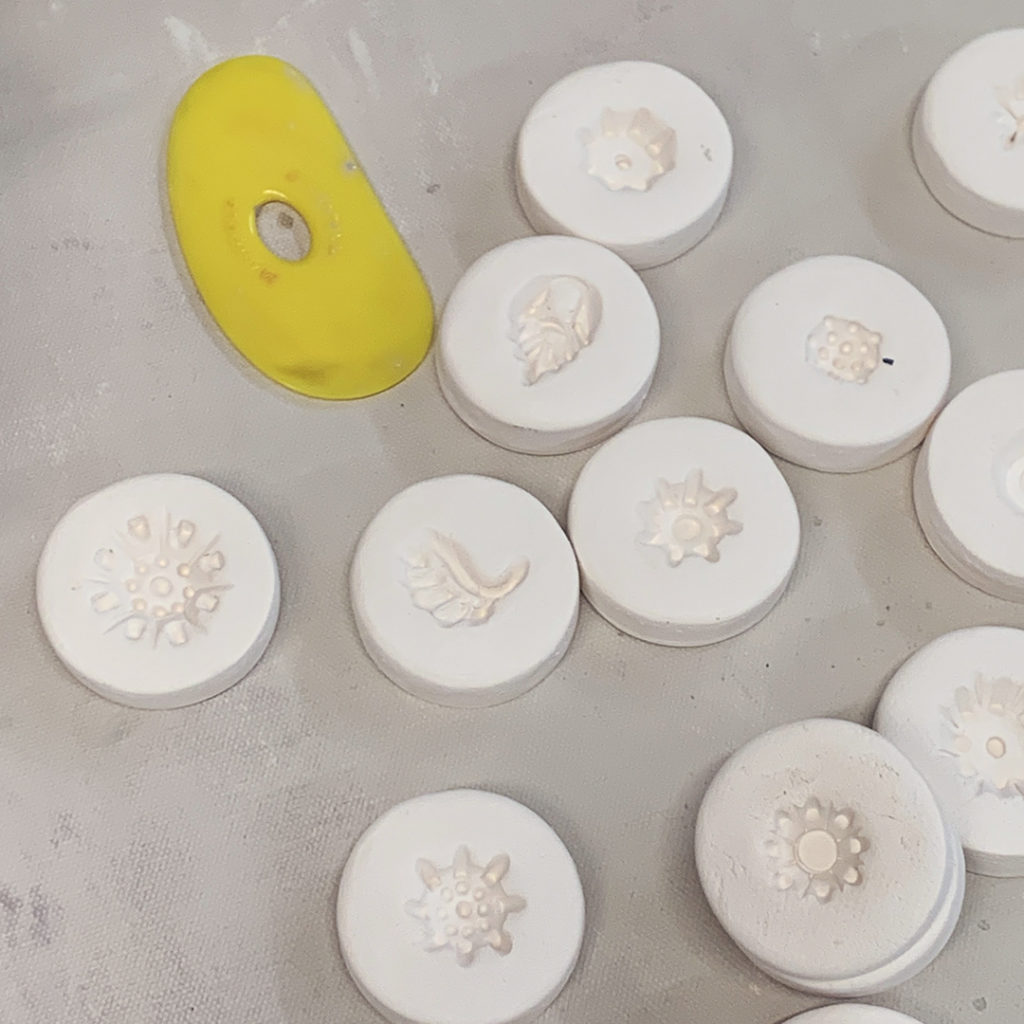
After my sprigged demo bowl, my students started with the sprigs to decorate their plain demo bowls. So much fun to watch my SURFACE DECORATION students excited to try new things on the plain bowls I surprised them with… as stamping & sprigs can be quite addictive… I should know – HA!
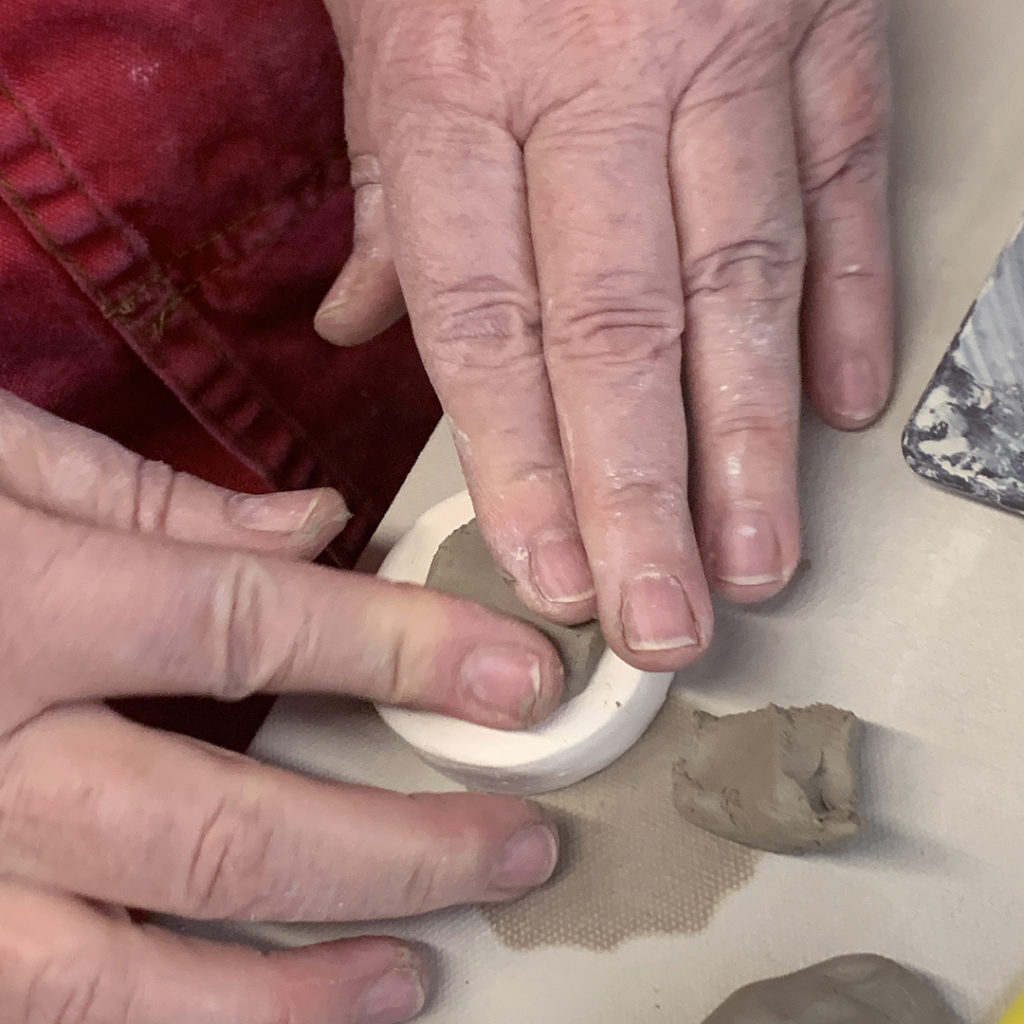
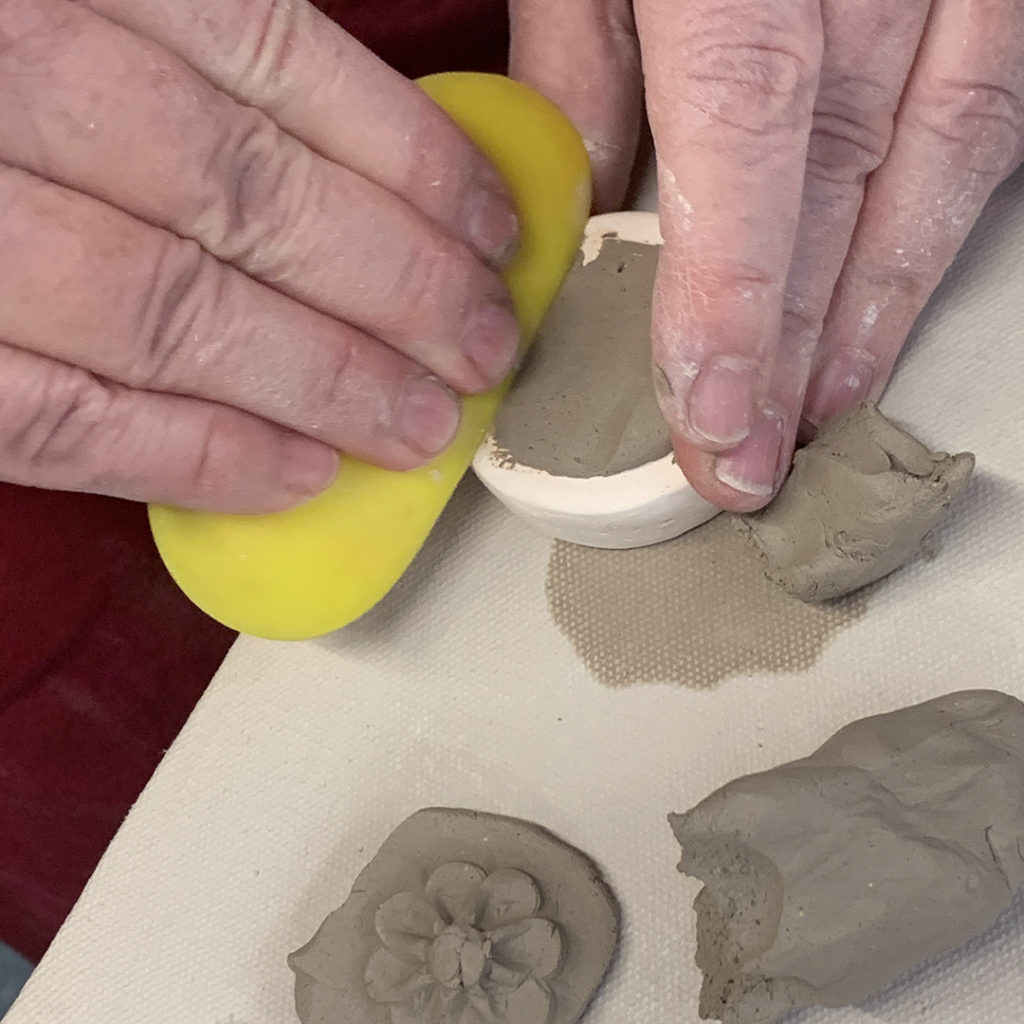

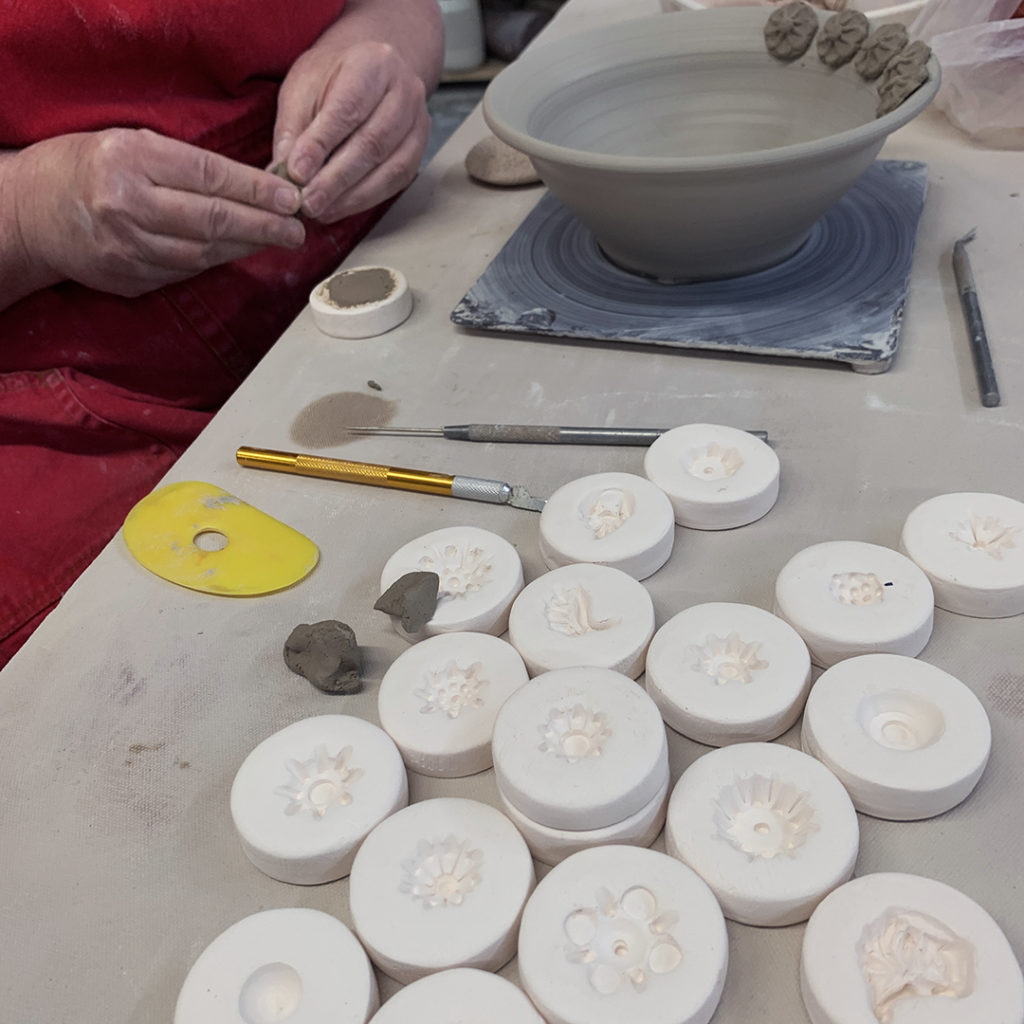
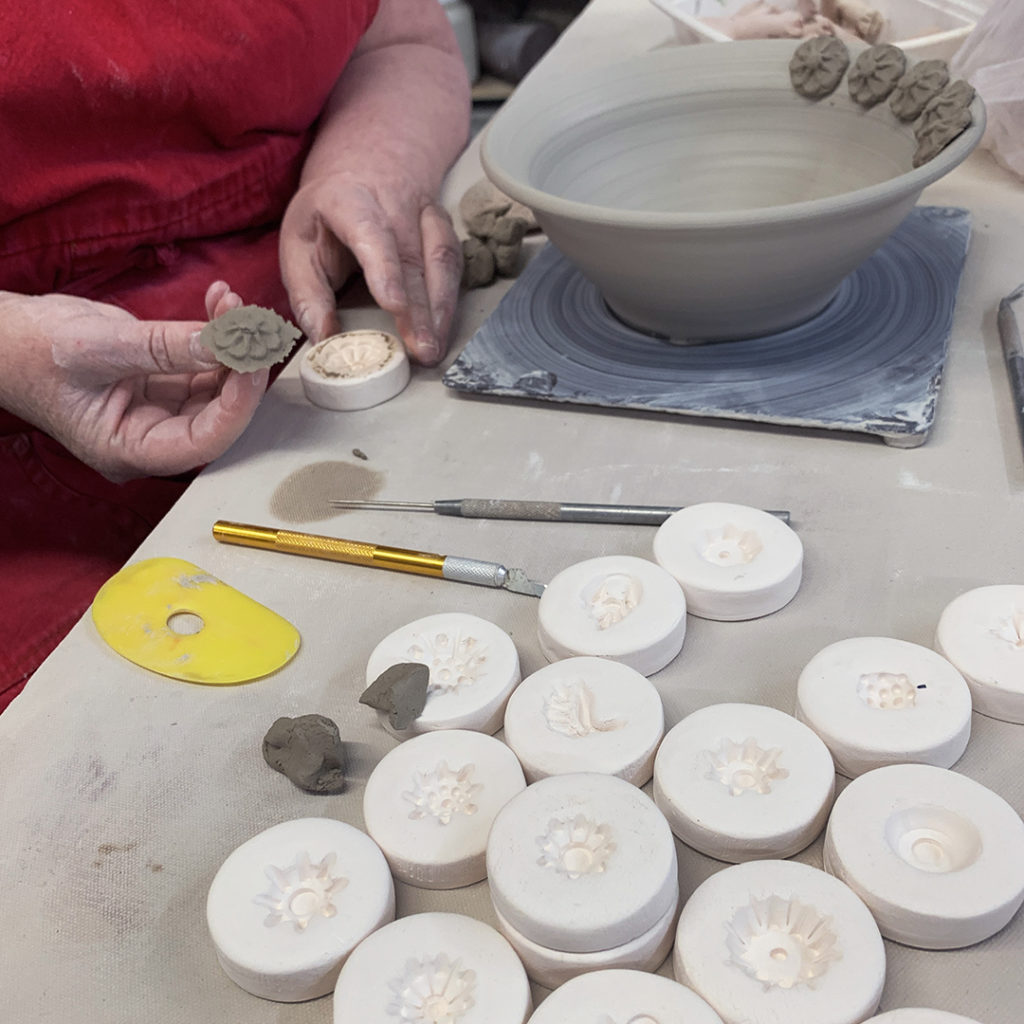

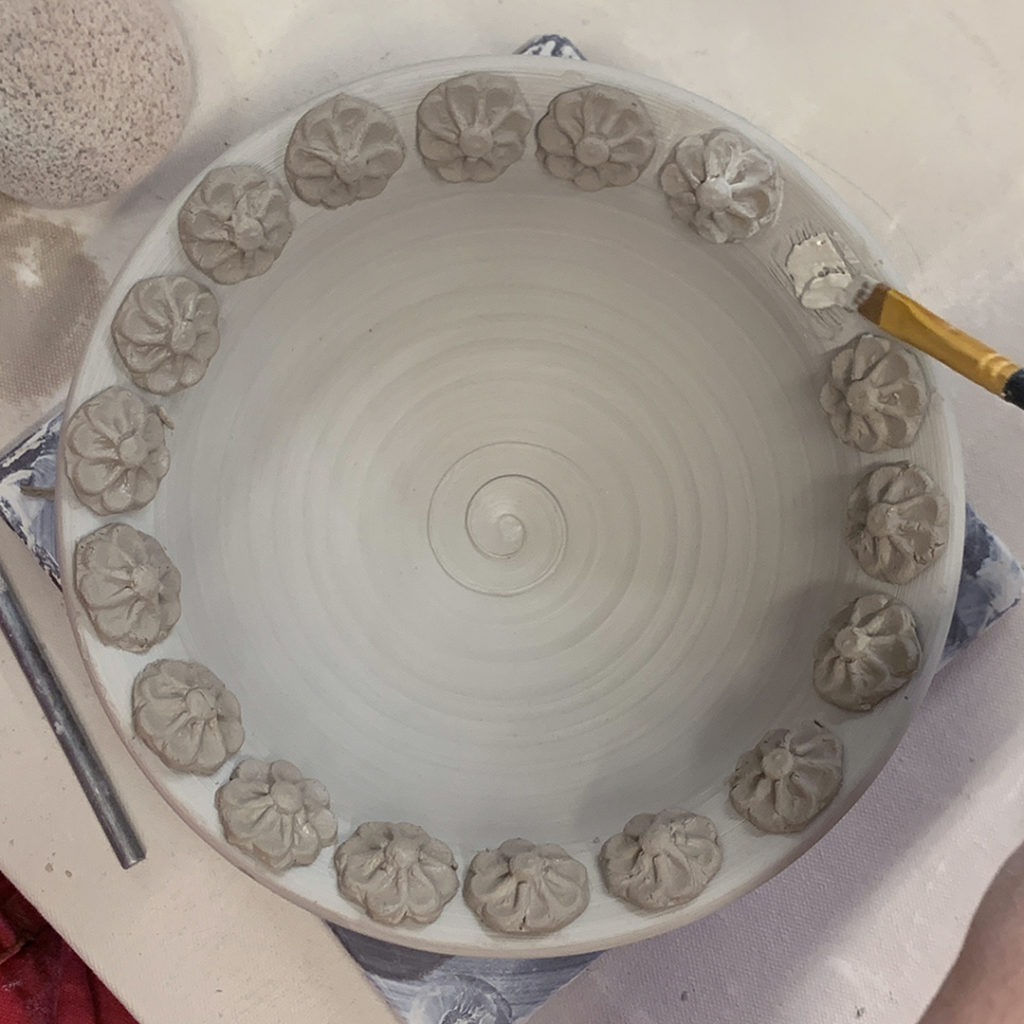


Here we go again…
making more handles… making more MUGS!!!
My favorite thing to make!

Score, slip, attach… repeat, repeat, repeat! You know by now that making mugs is my favorite thing to do in the studio! So today was another good day with another batch assembled.
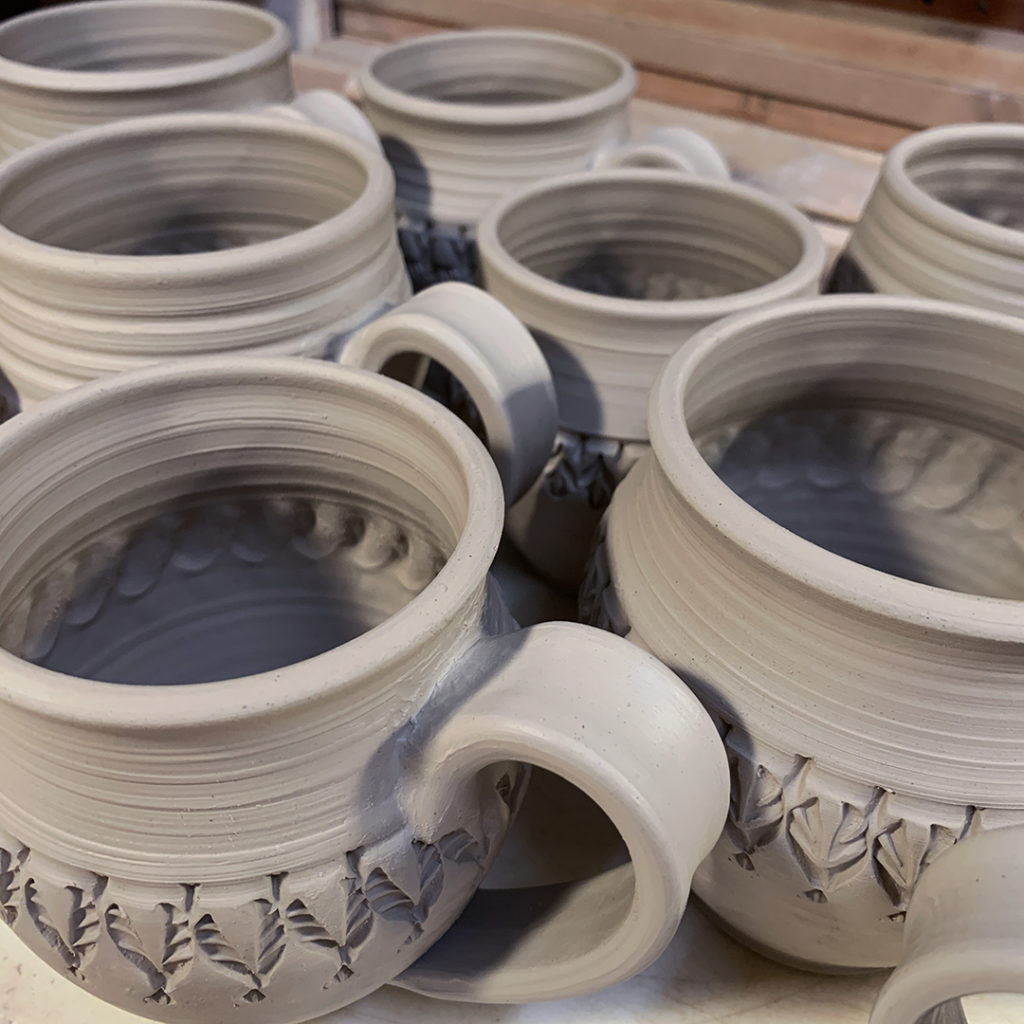
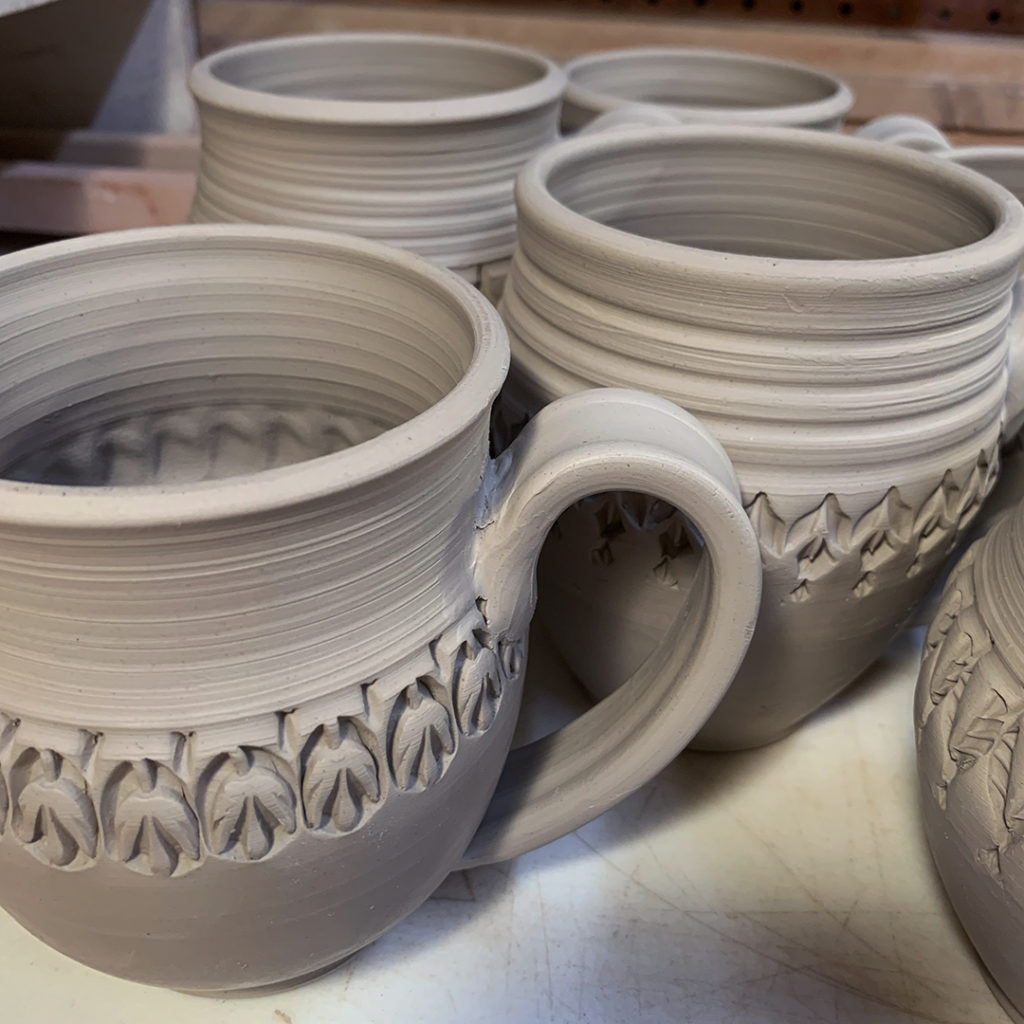
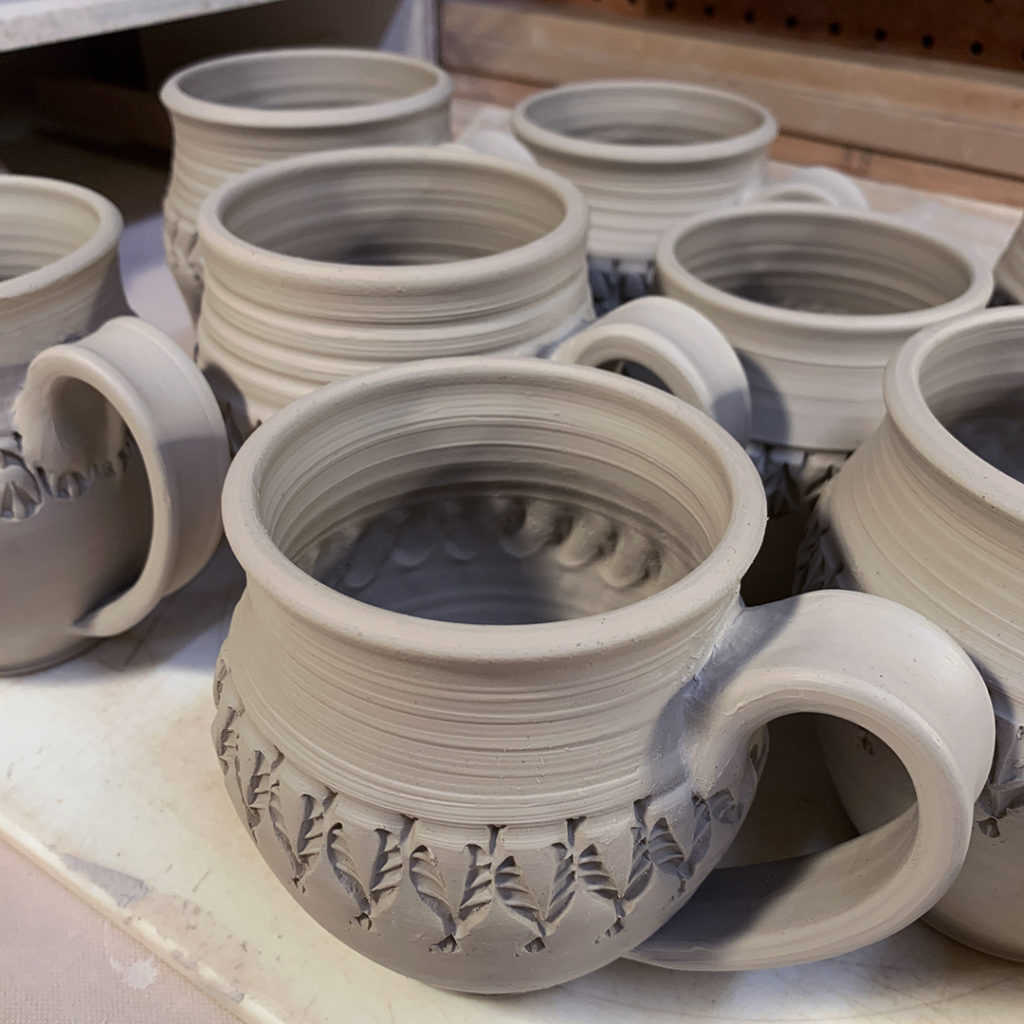
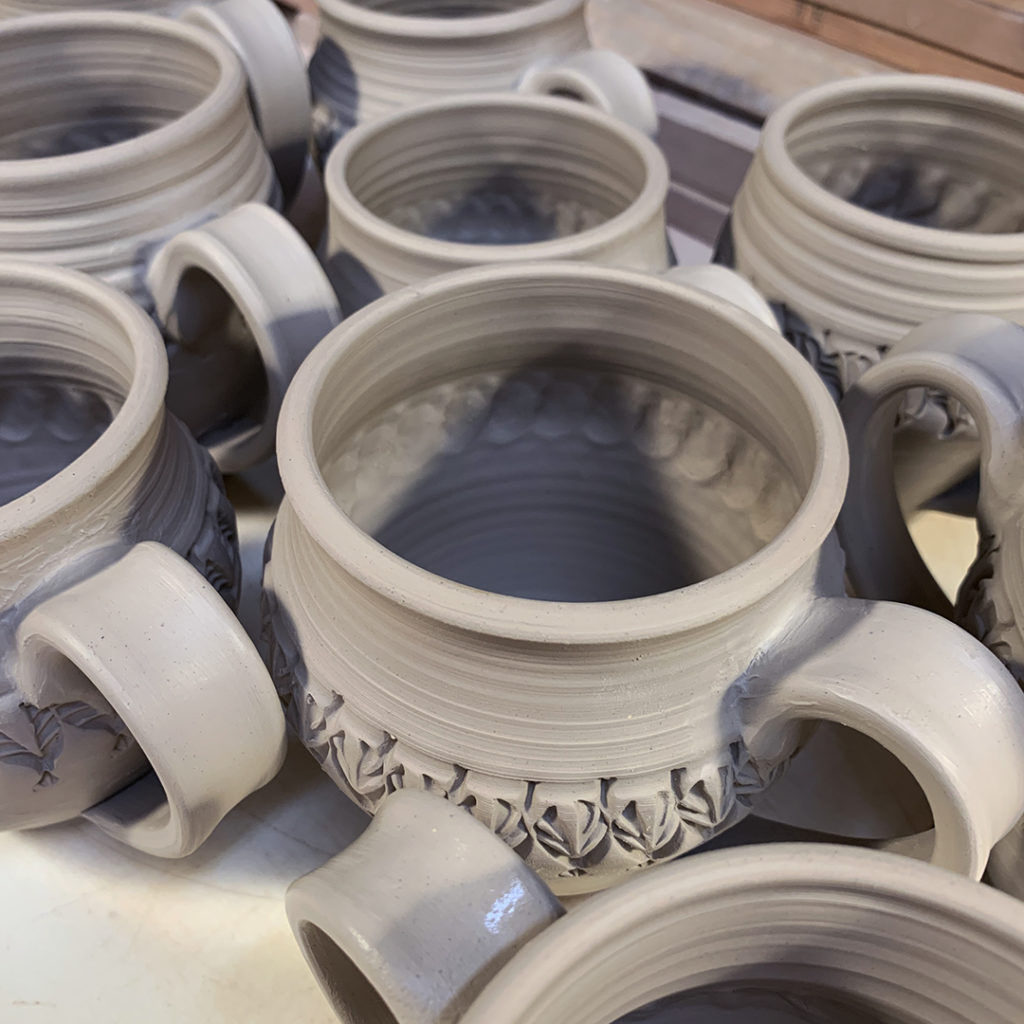
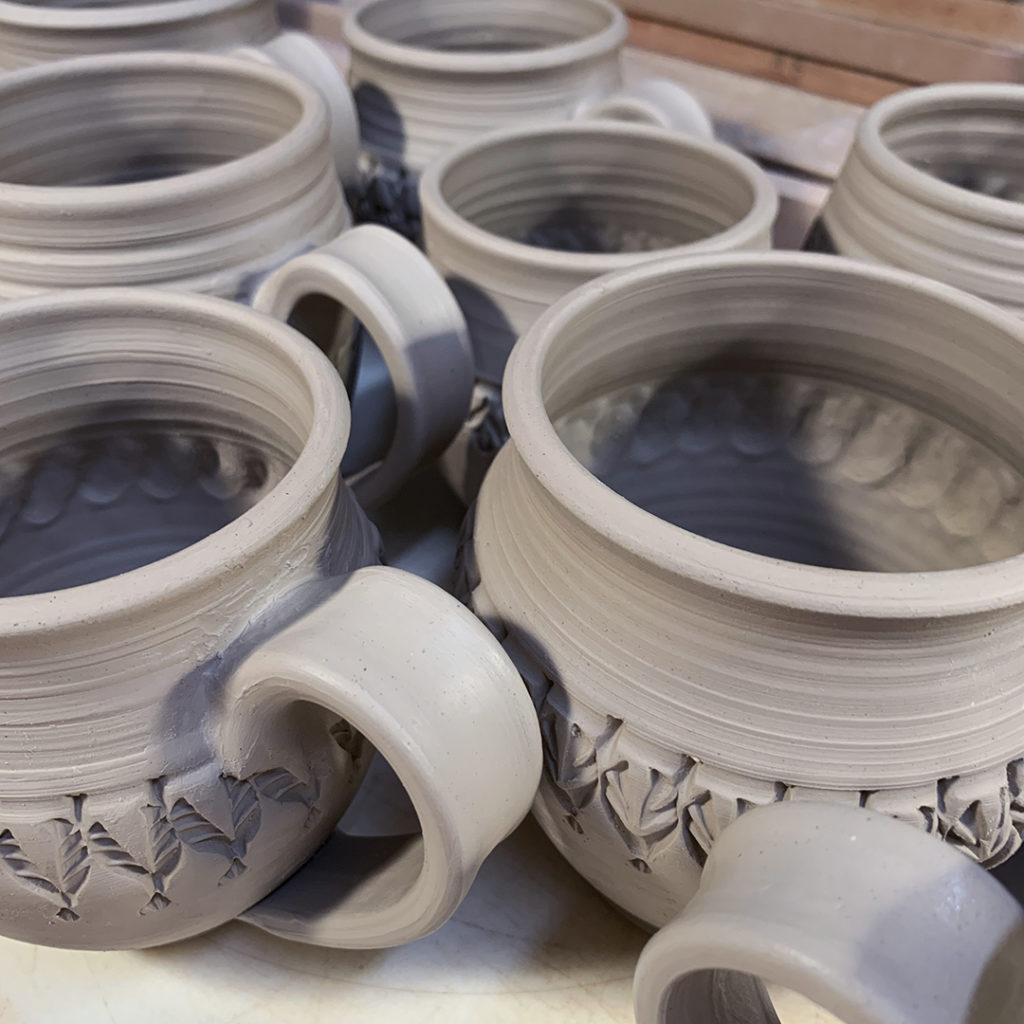

Handles pulled, looped over & standing tall so they can stiffen up with the curve already established. I’ll let them set for a few minutes before I start attaching them to the cylinder mugs-to-be!

Got my clay wedges ready… kinda like ClayHenge…
ready to start pulling some handles for the latest batch of mugs!

Now with handles attached, these “wheelthrown-handbuilt-combo” mugs needed a bit of color. So I dipped the top portion of them into a thin colored flashing slip. I held them upside-down by the footring & dipped them in the bucket… and then “floated” them on kiln bricks so they could drip-dry!




The slip does a really good job of “filling” any of the little cracks & imperfections… as well as adding color. These flashing slips will change colors & add some flashing drama when fired in the soda kiln!





|
Gary Jackson: Fire When Ready Pottery
Lillstreet Studios ∙ 4401 North Ravenswood, Chicago, Illinois 60640 ∙ 773-307-8664 gary@firewhenreadypottery.com |